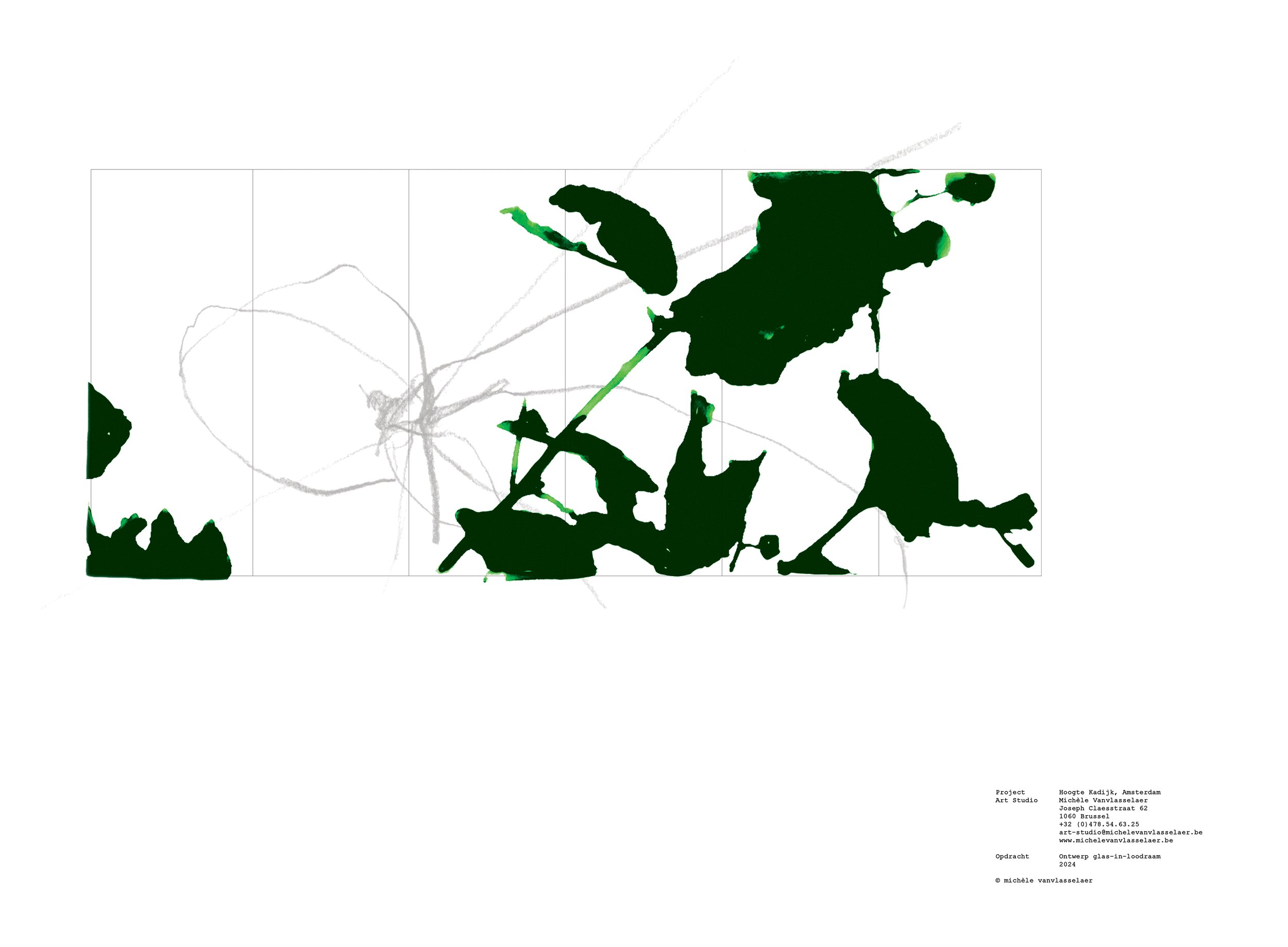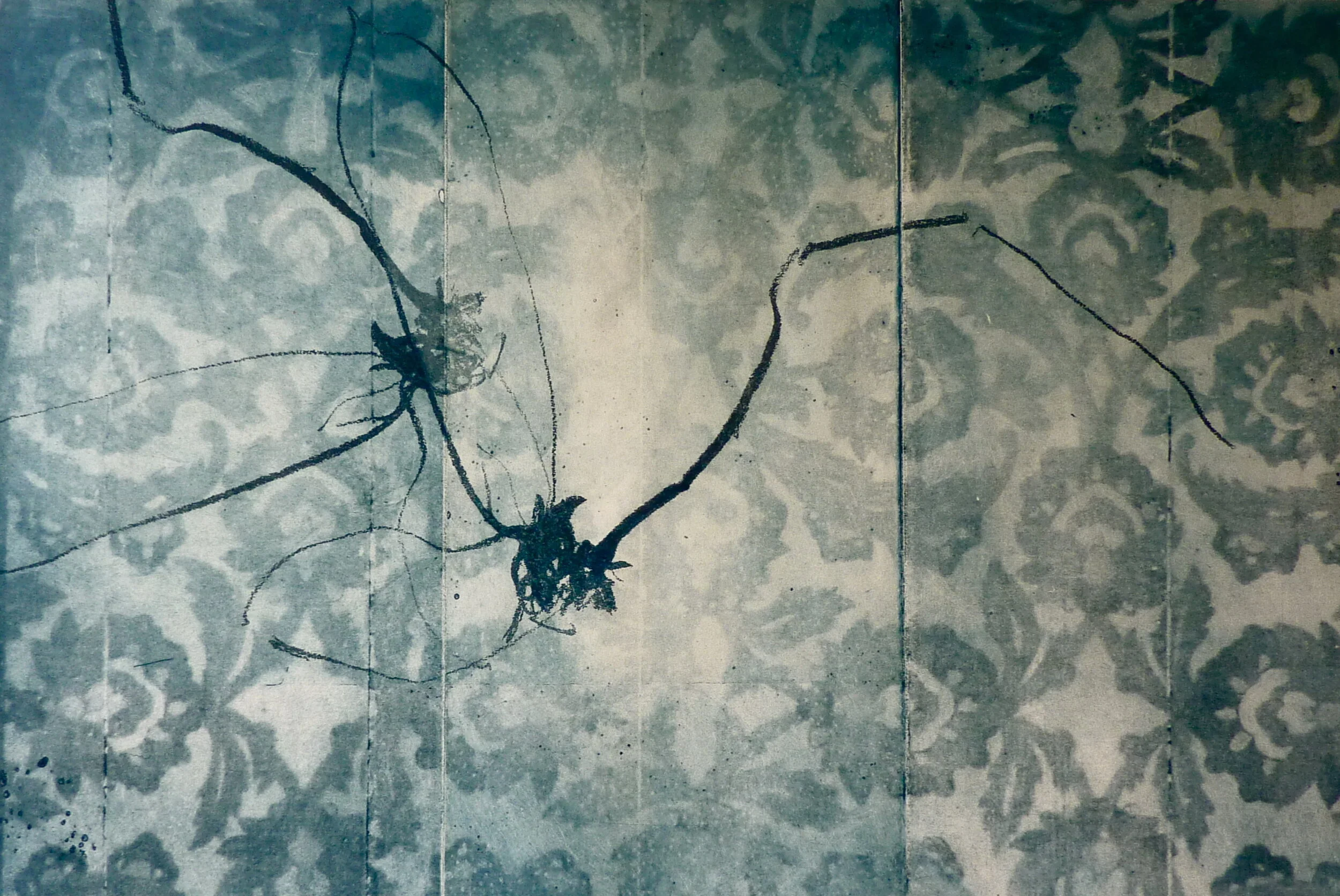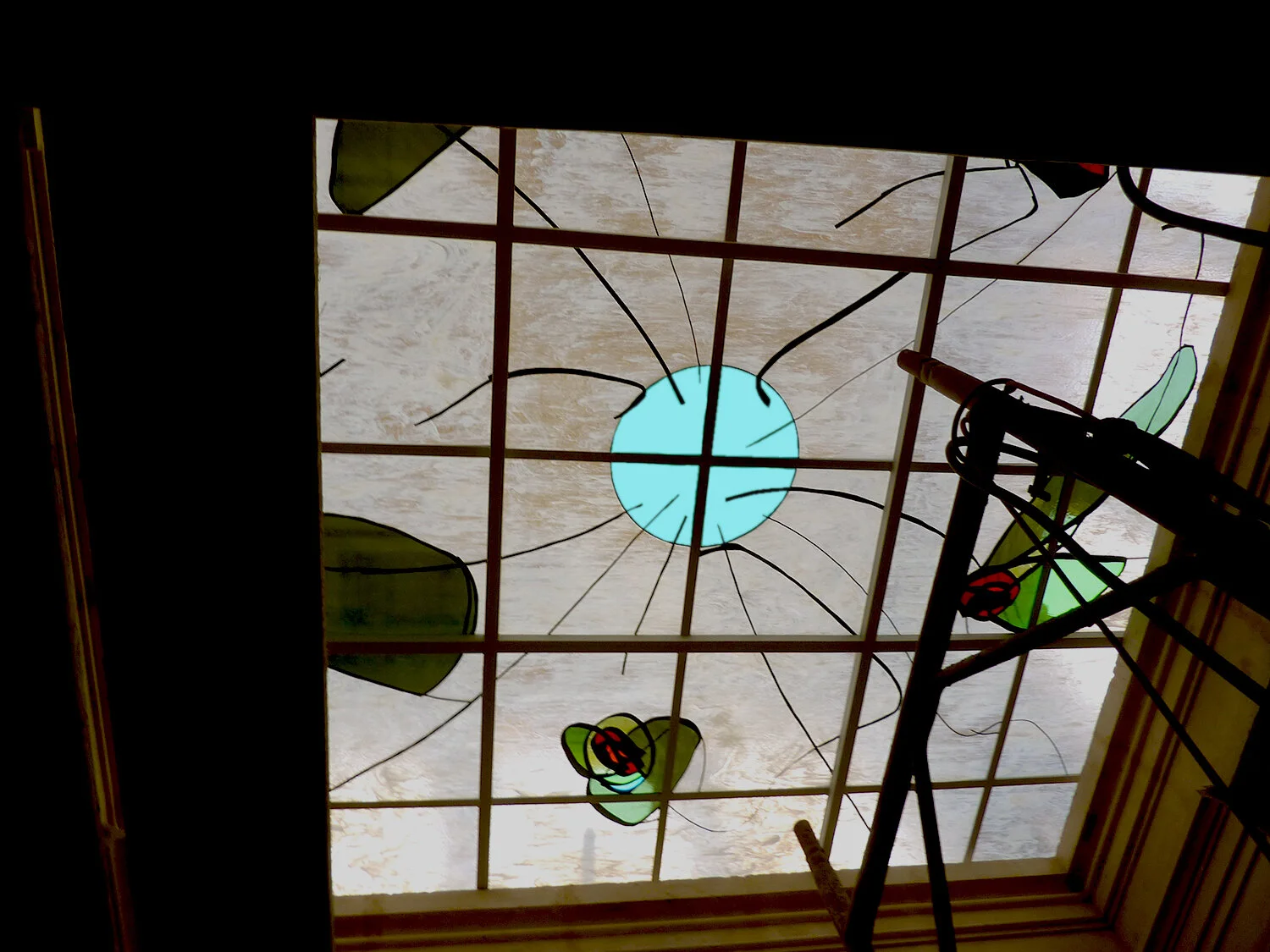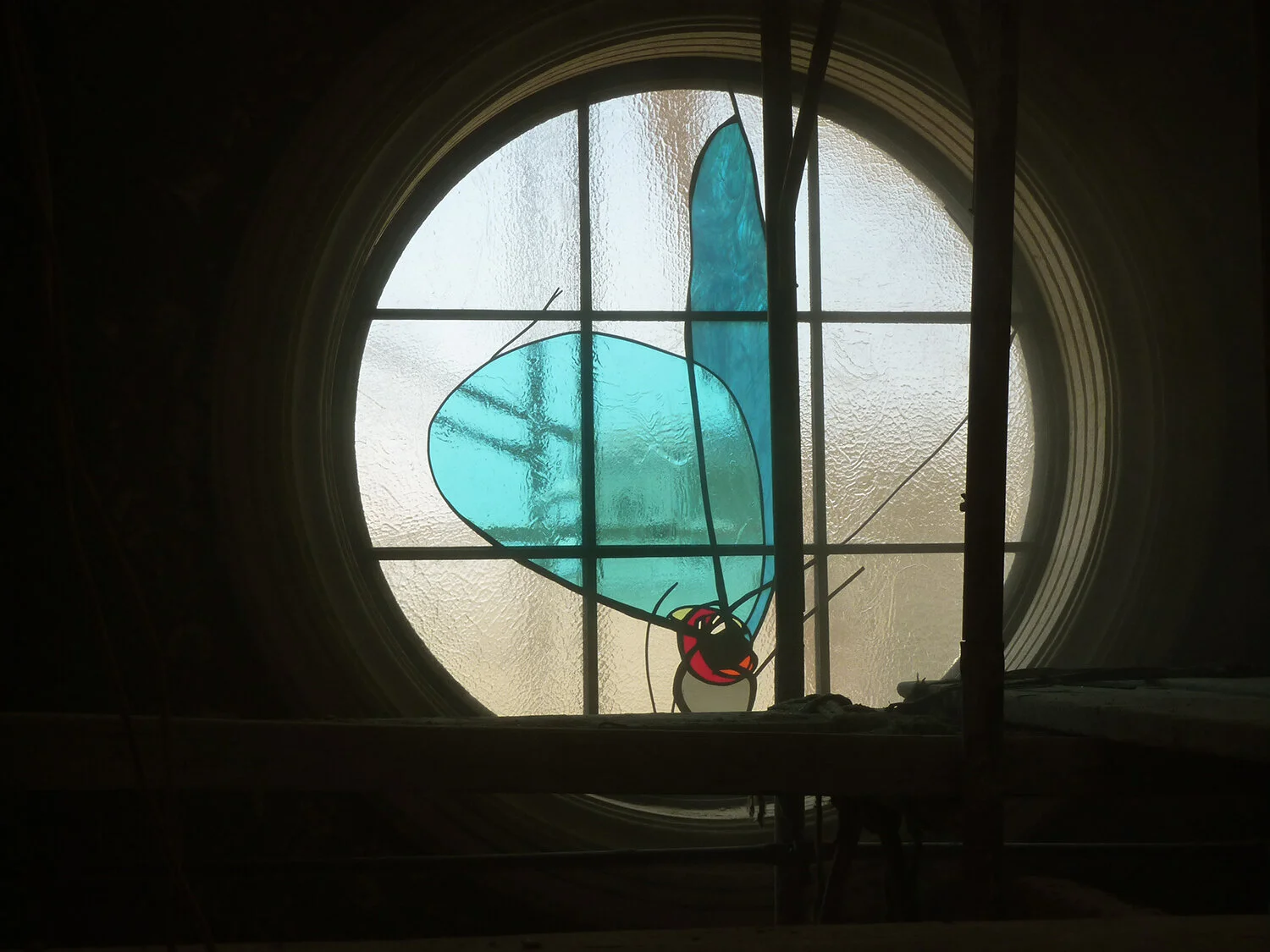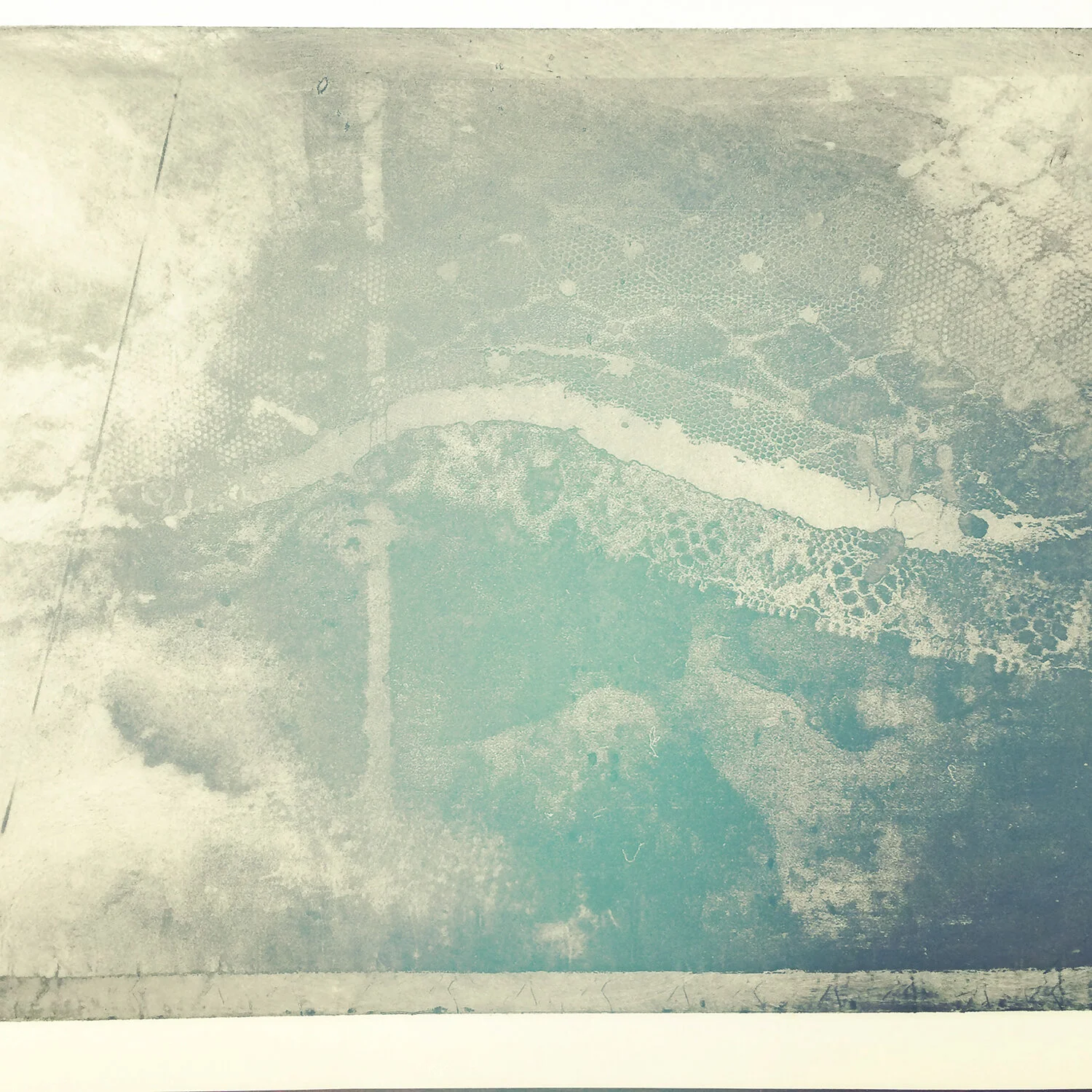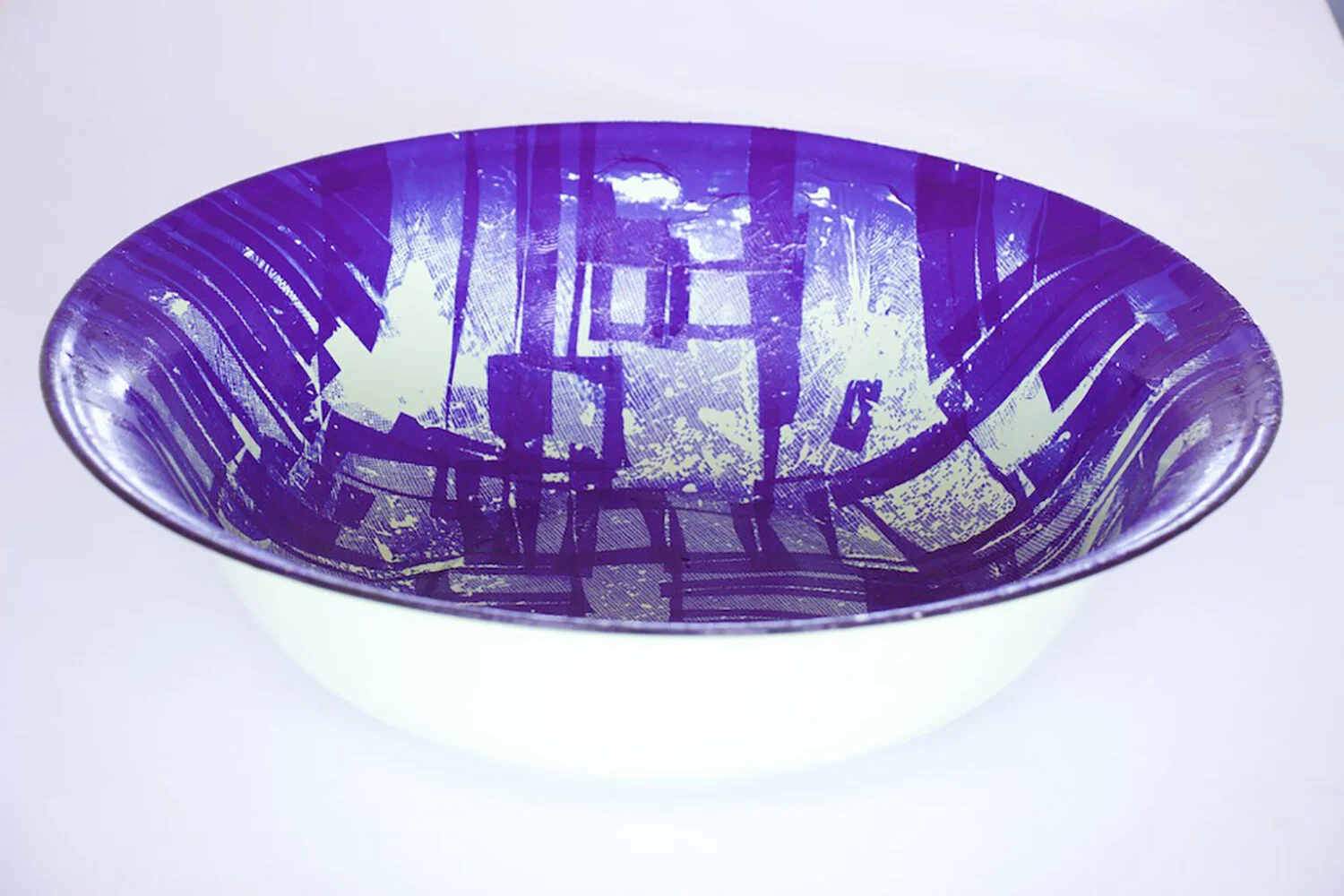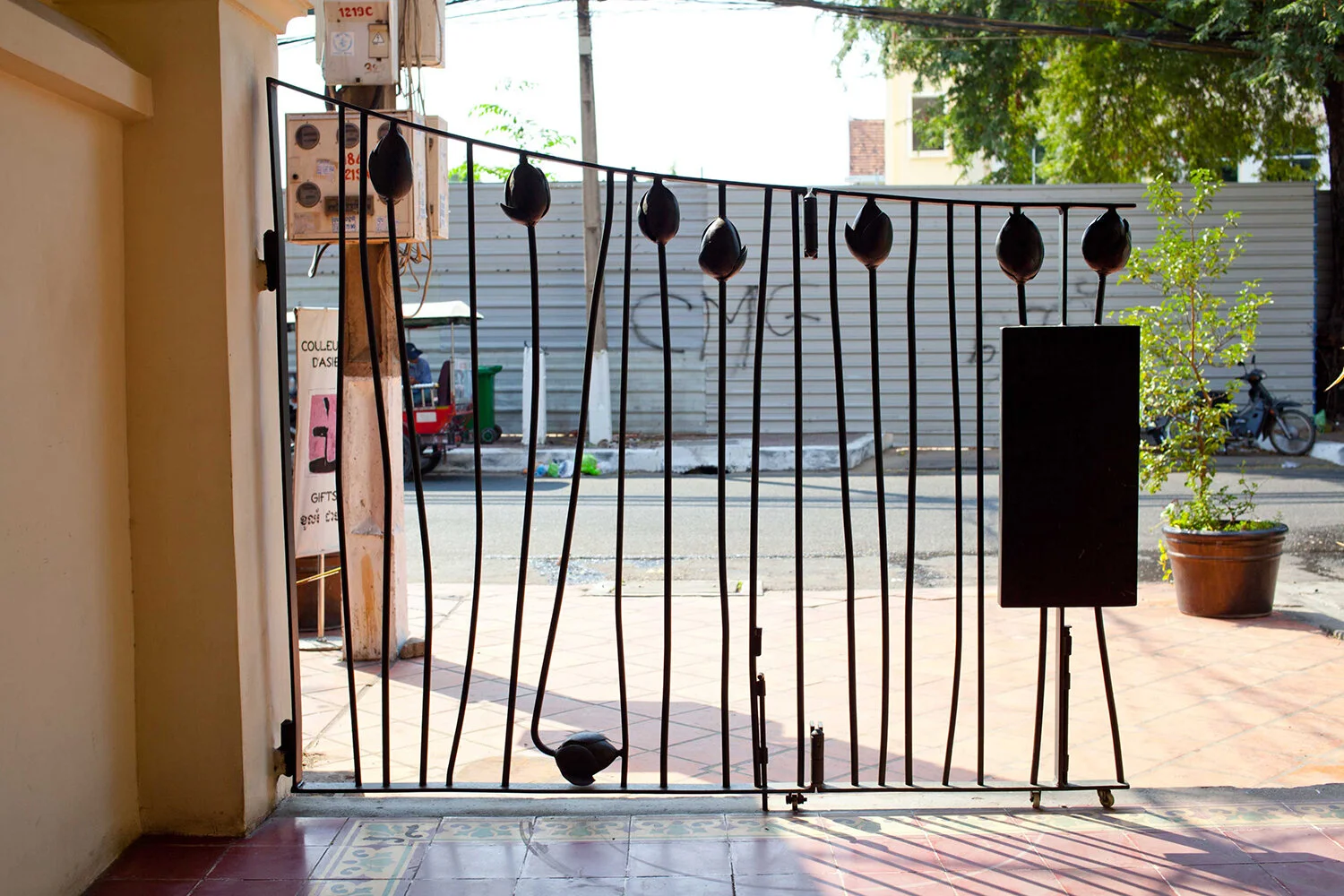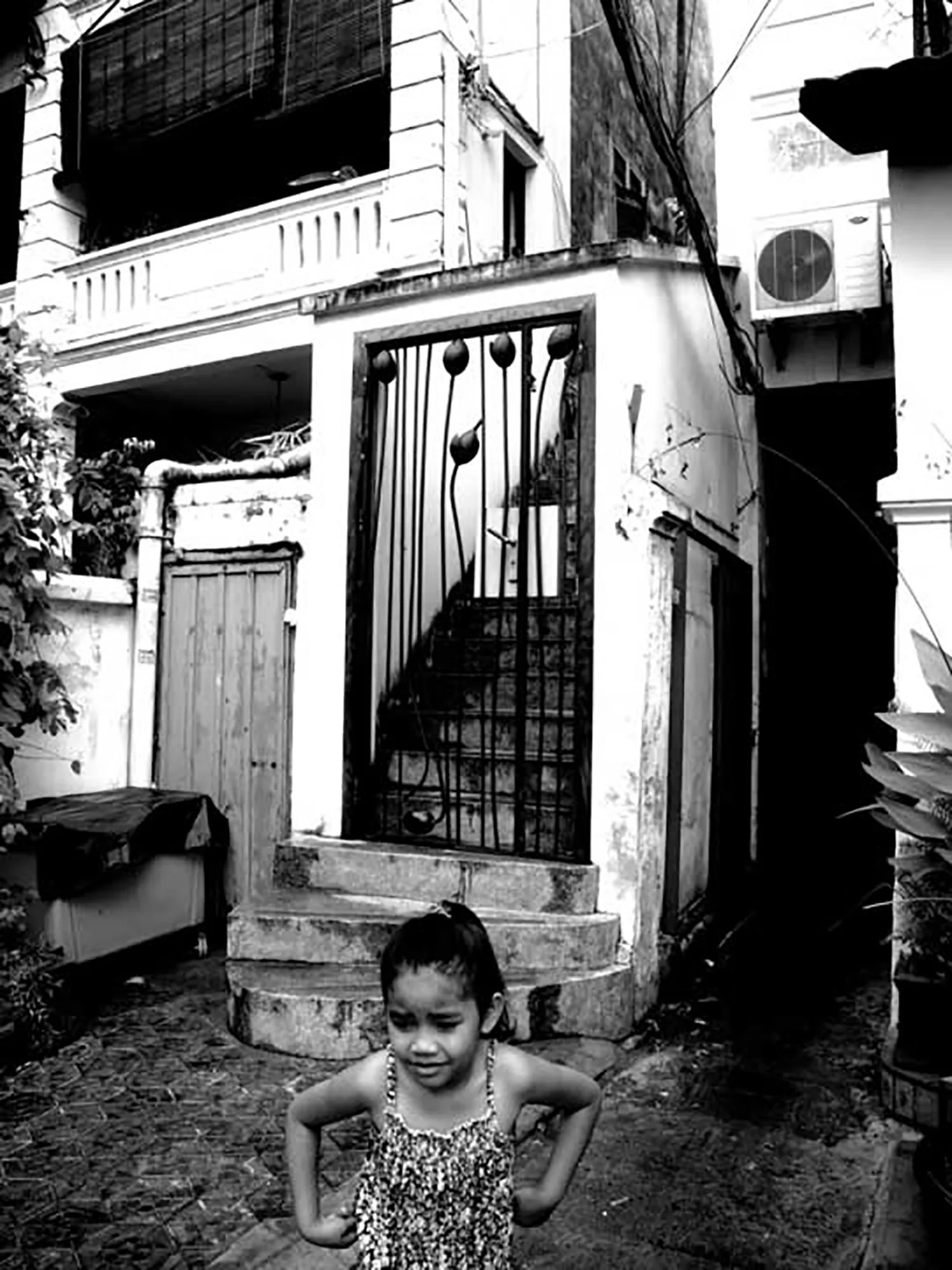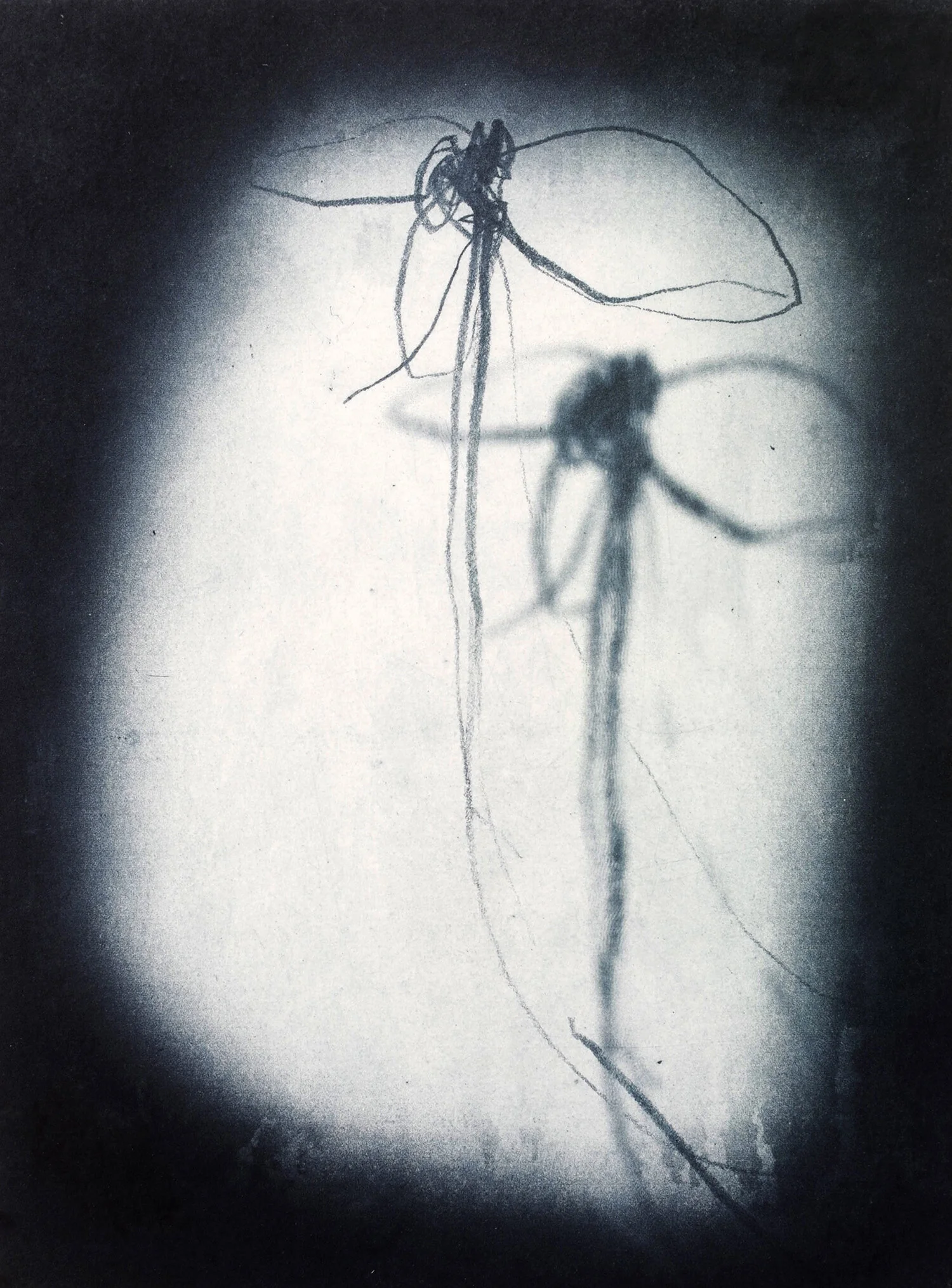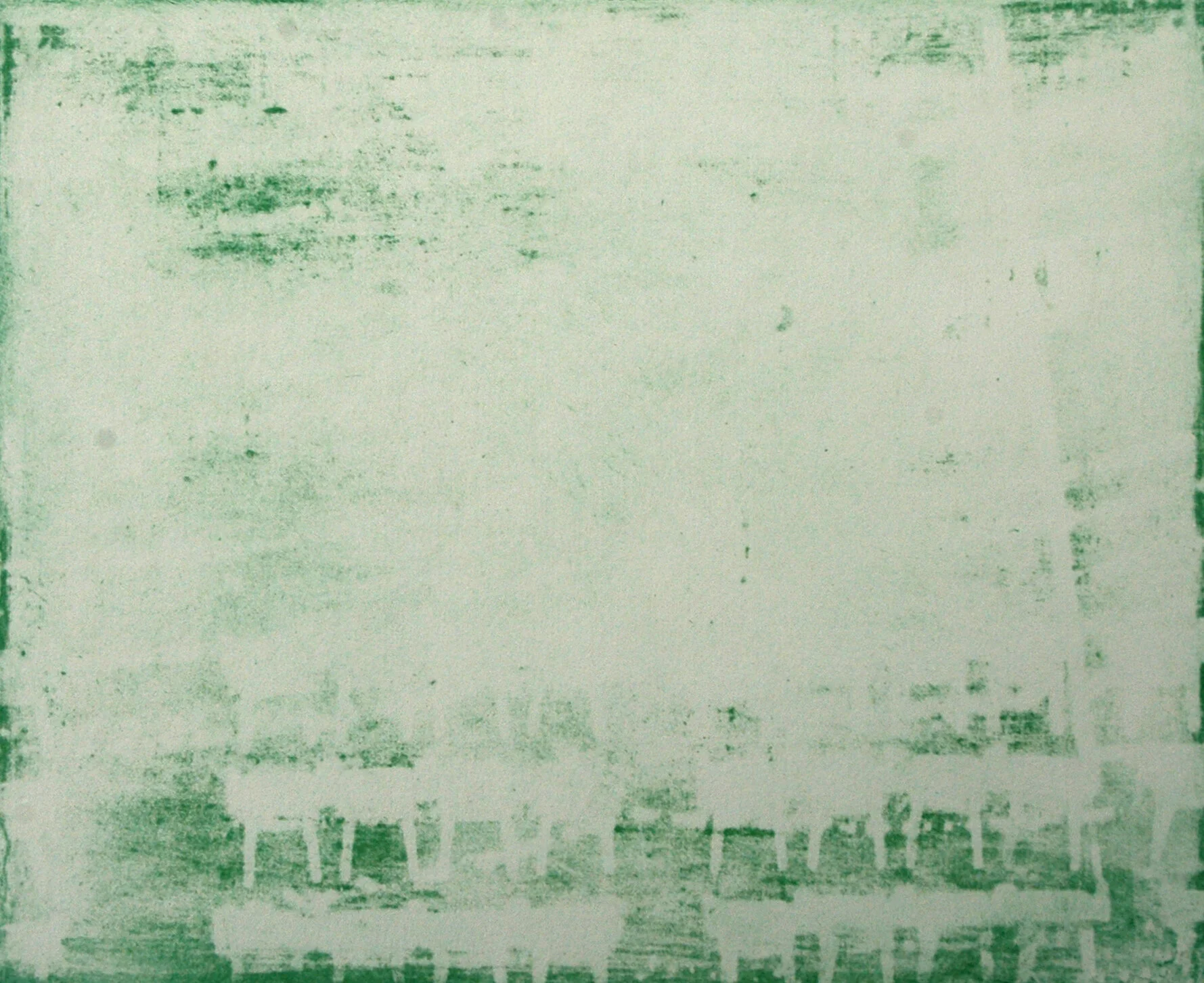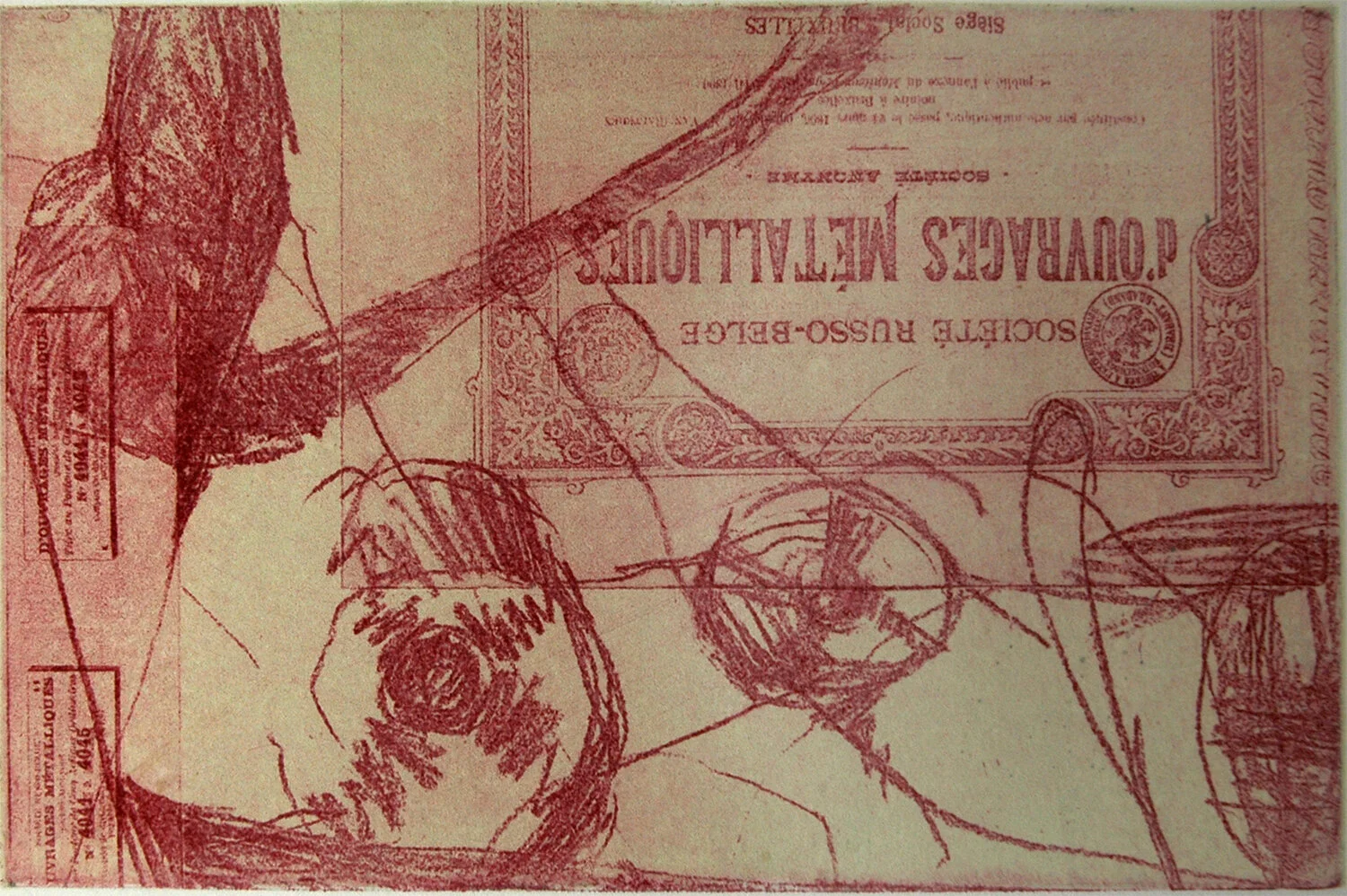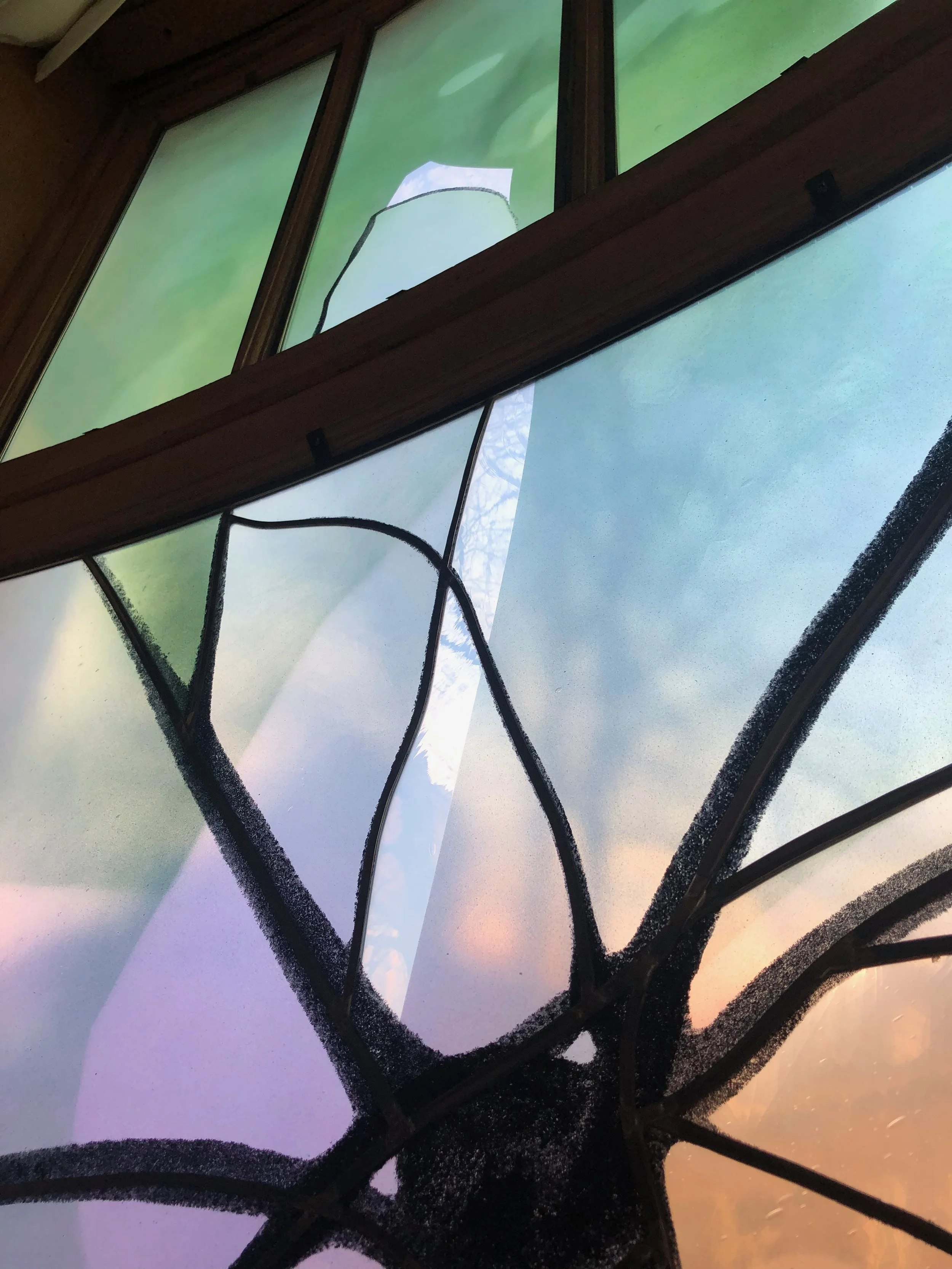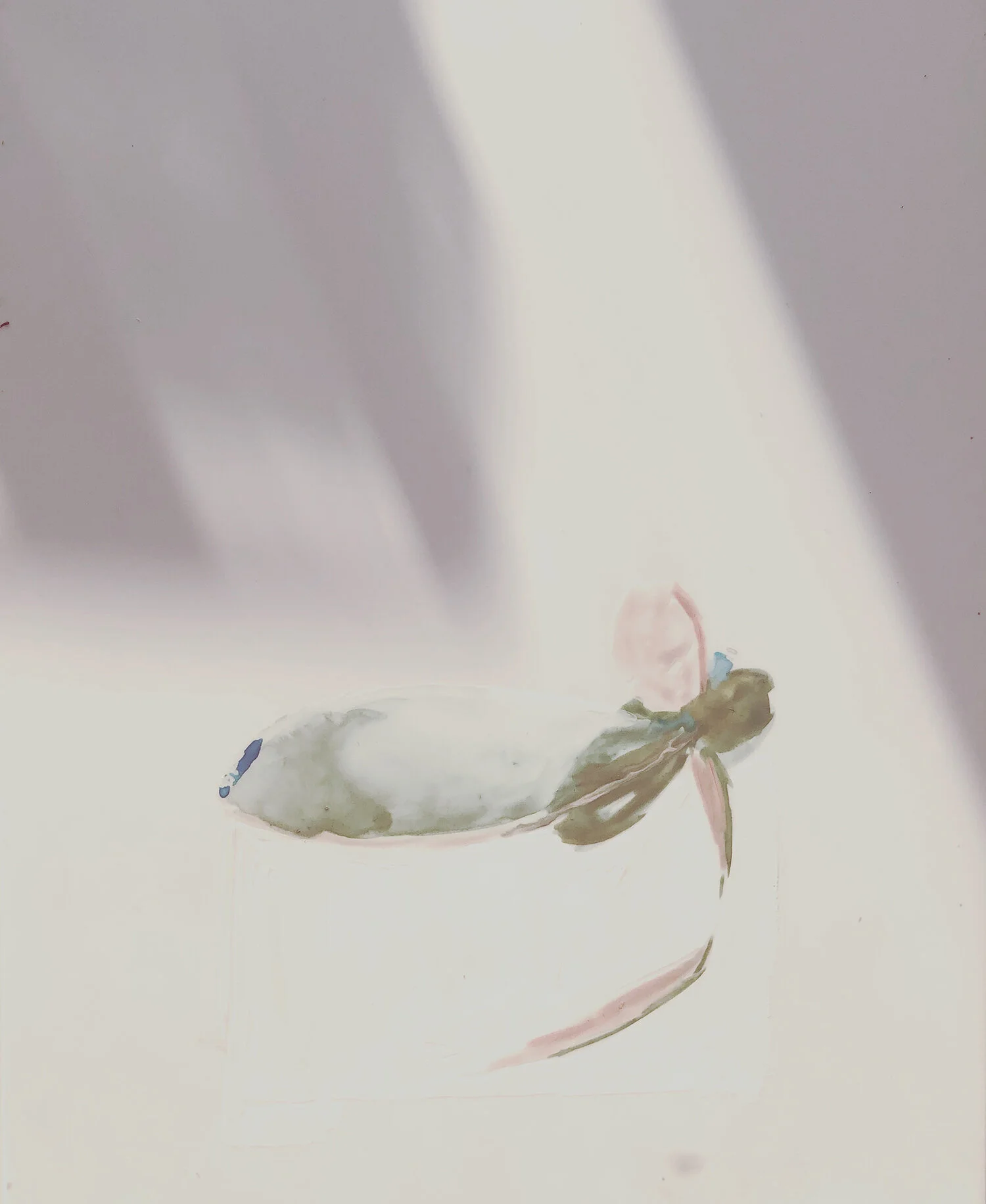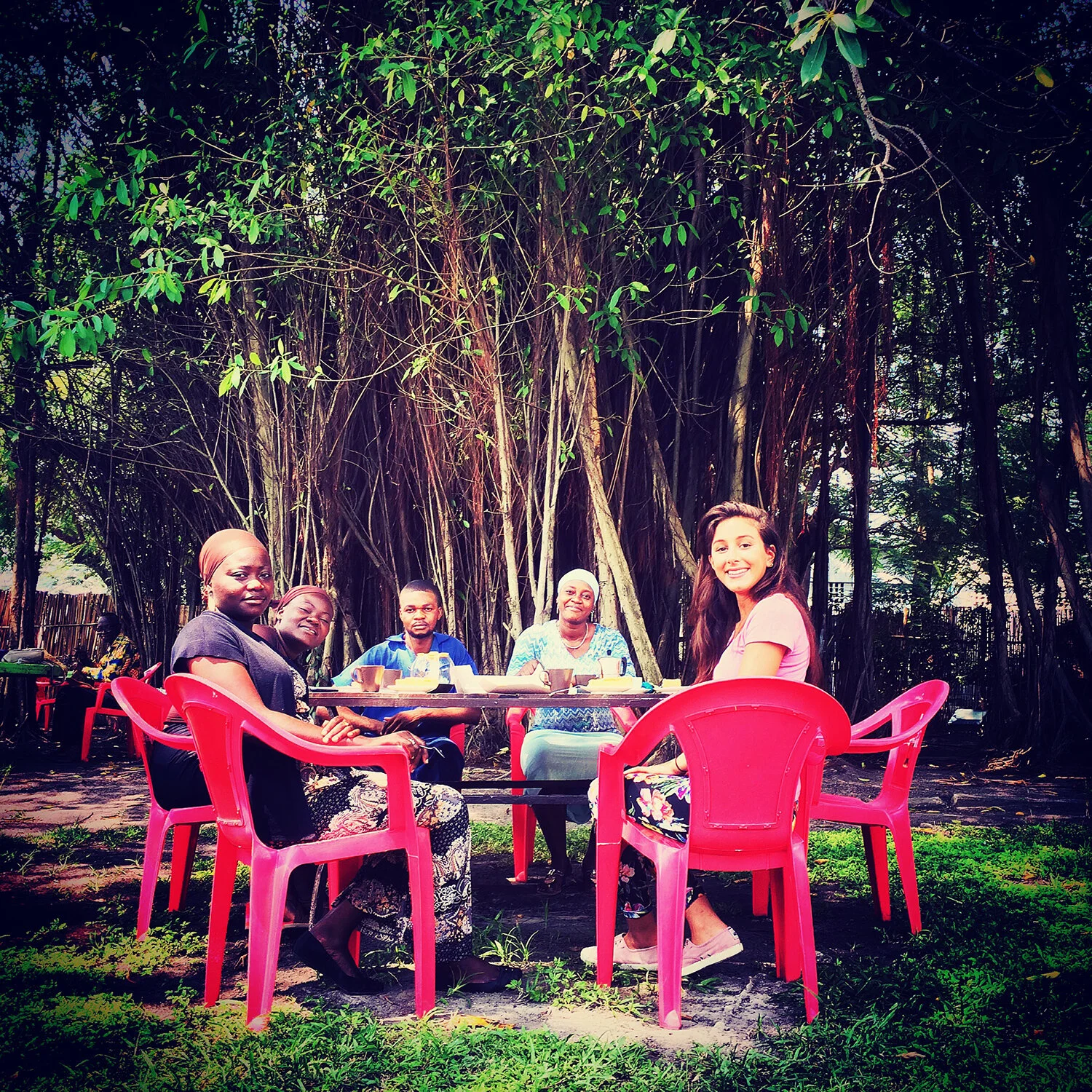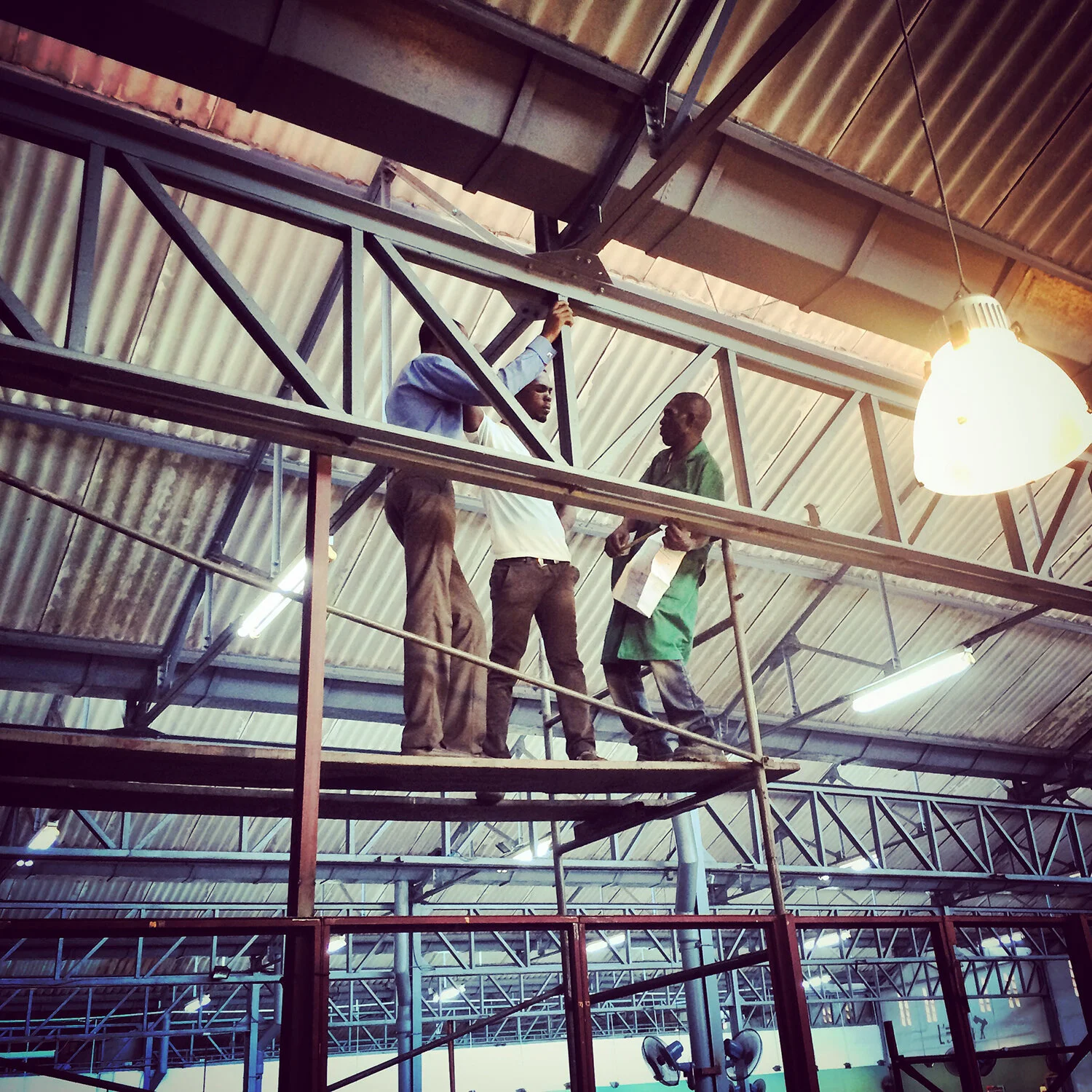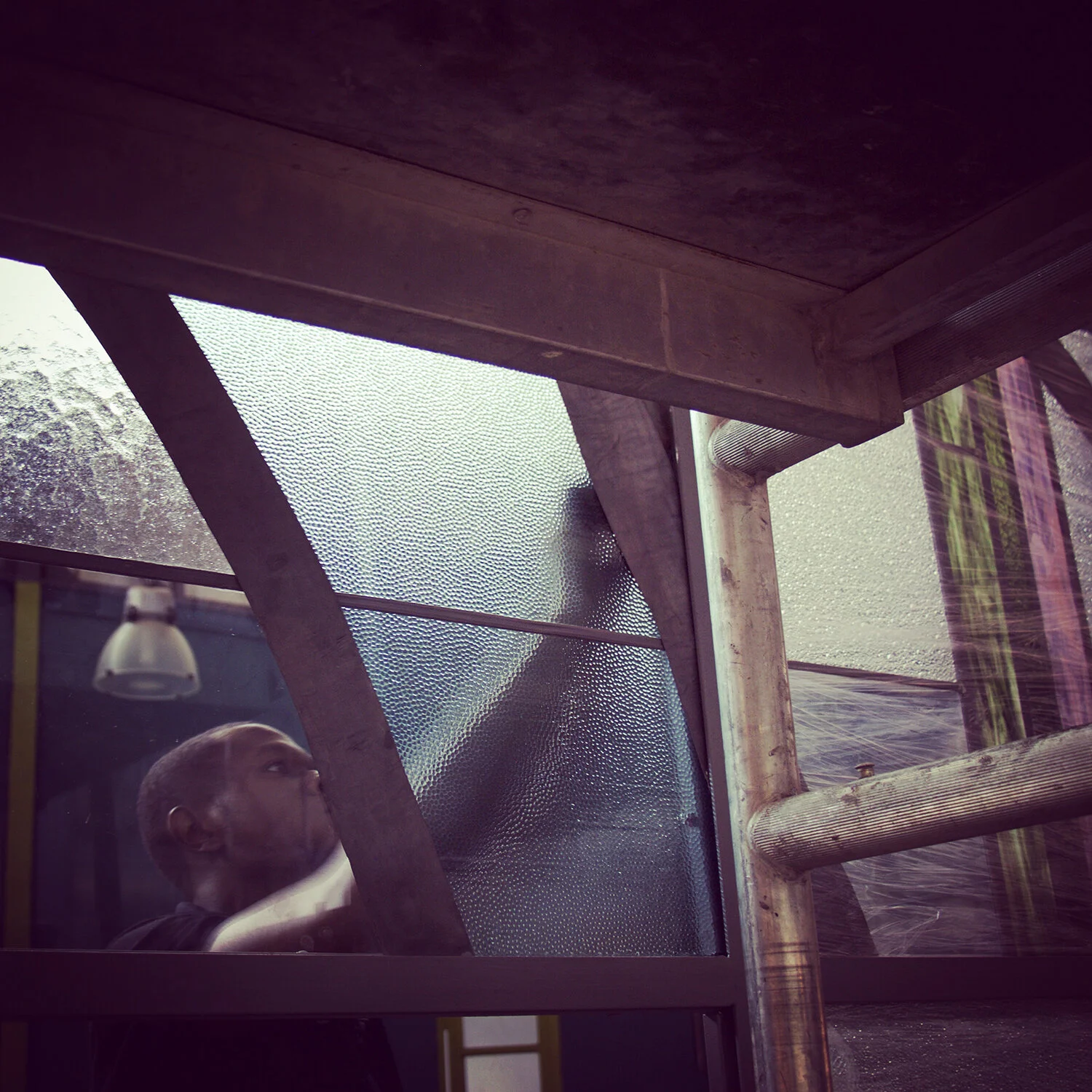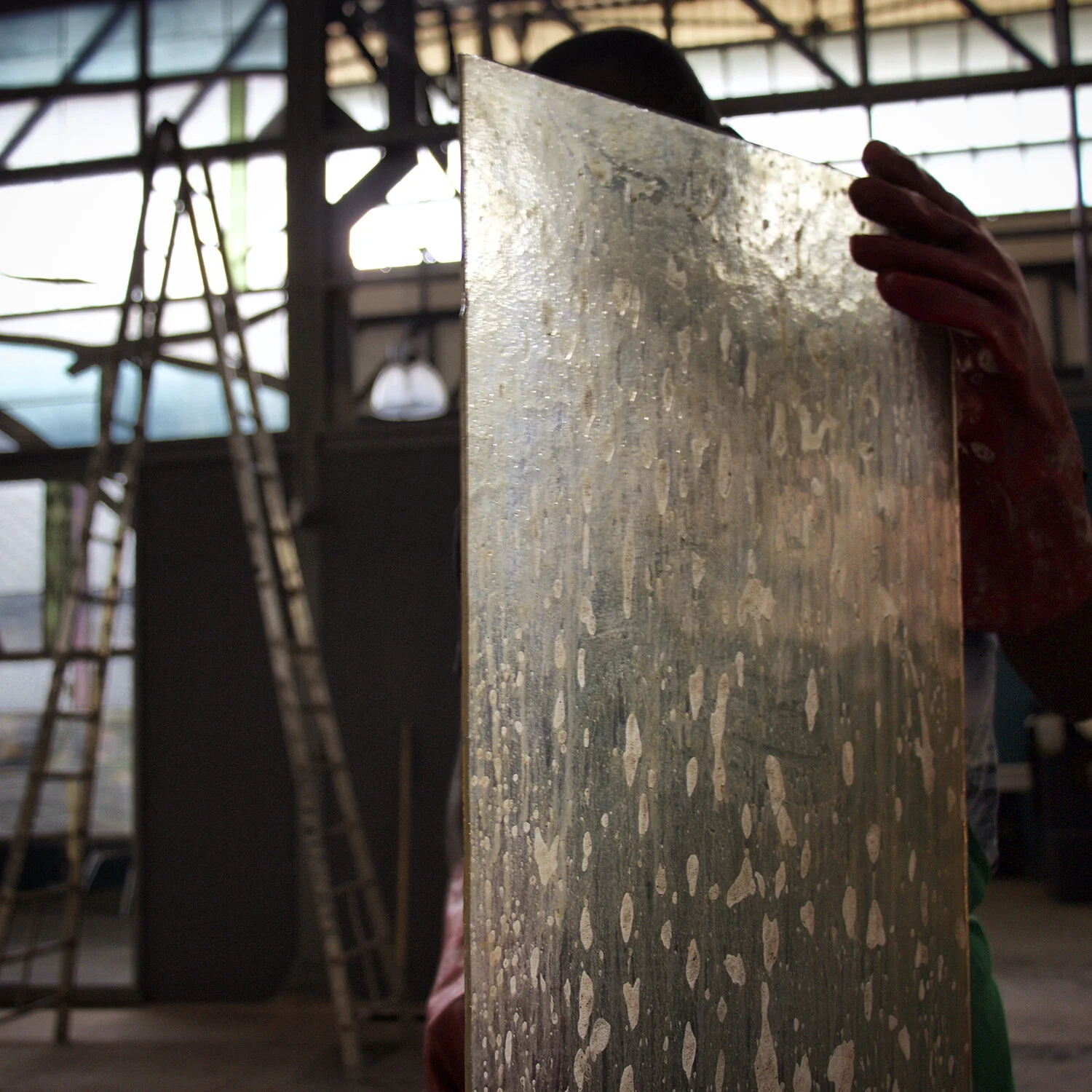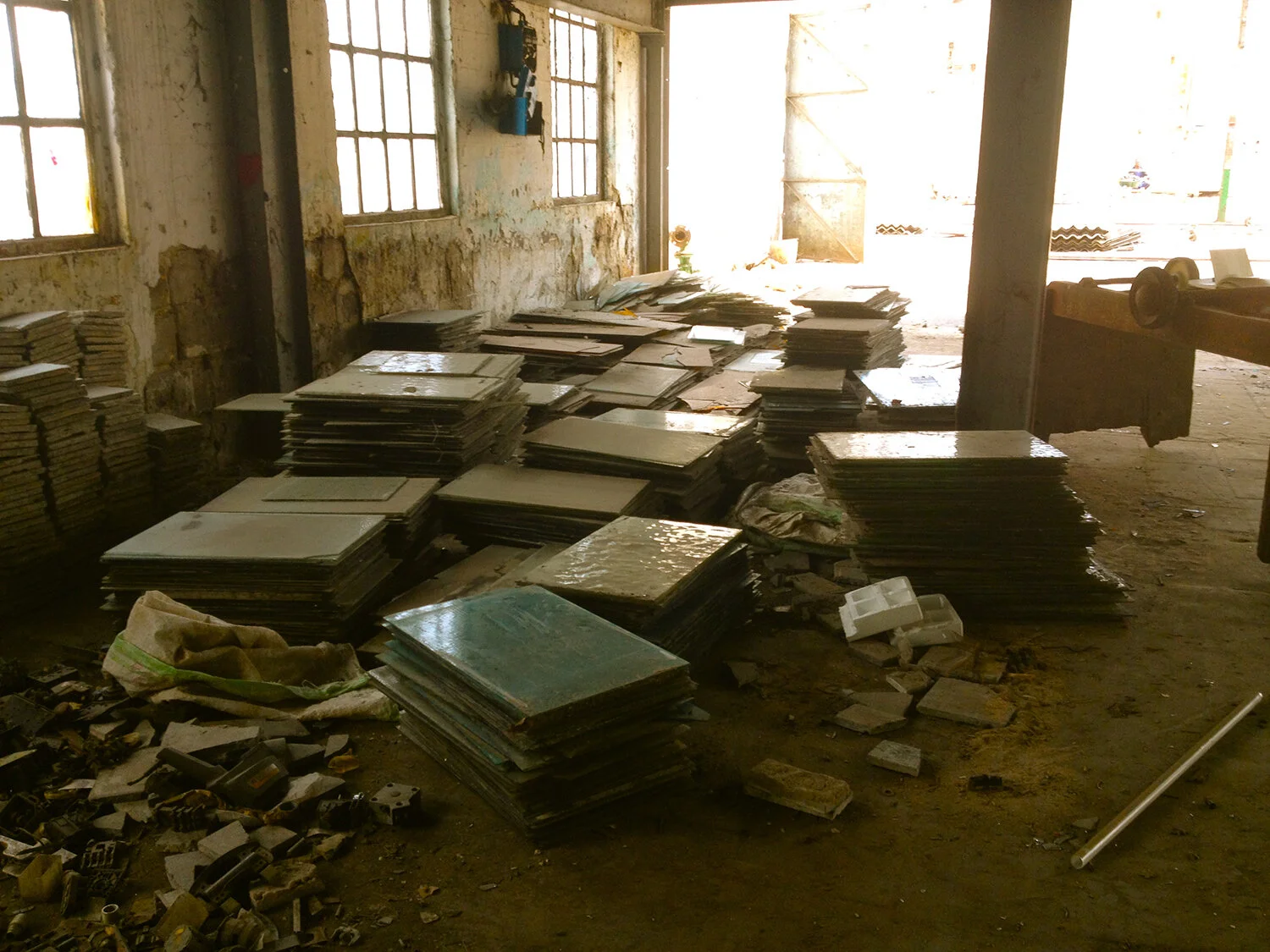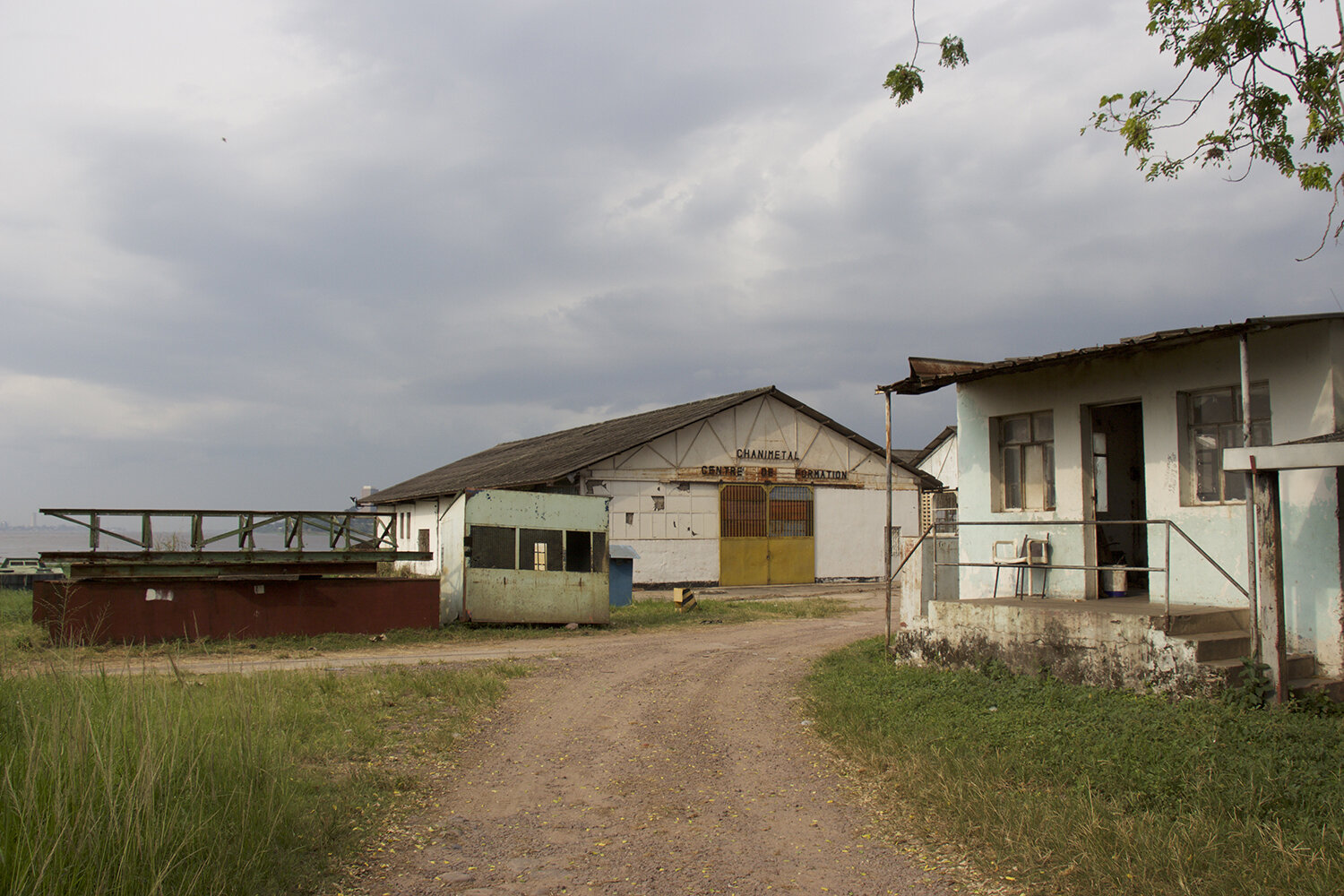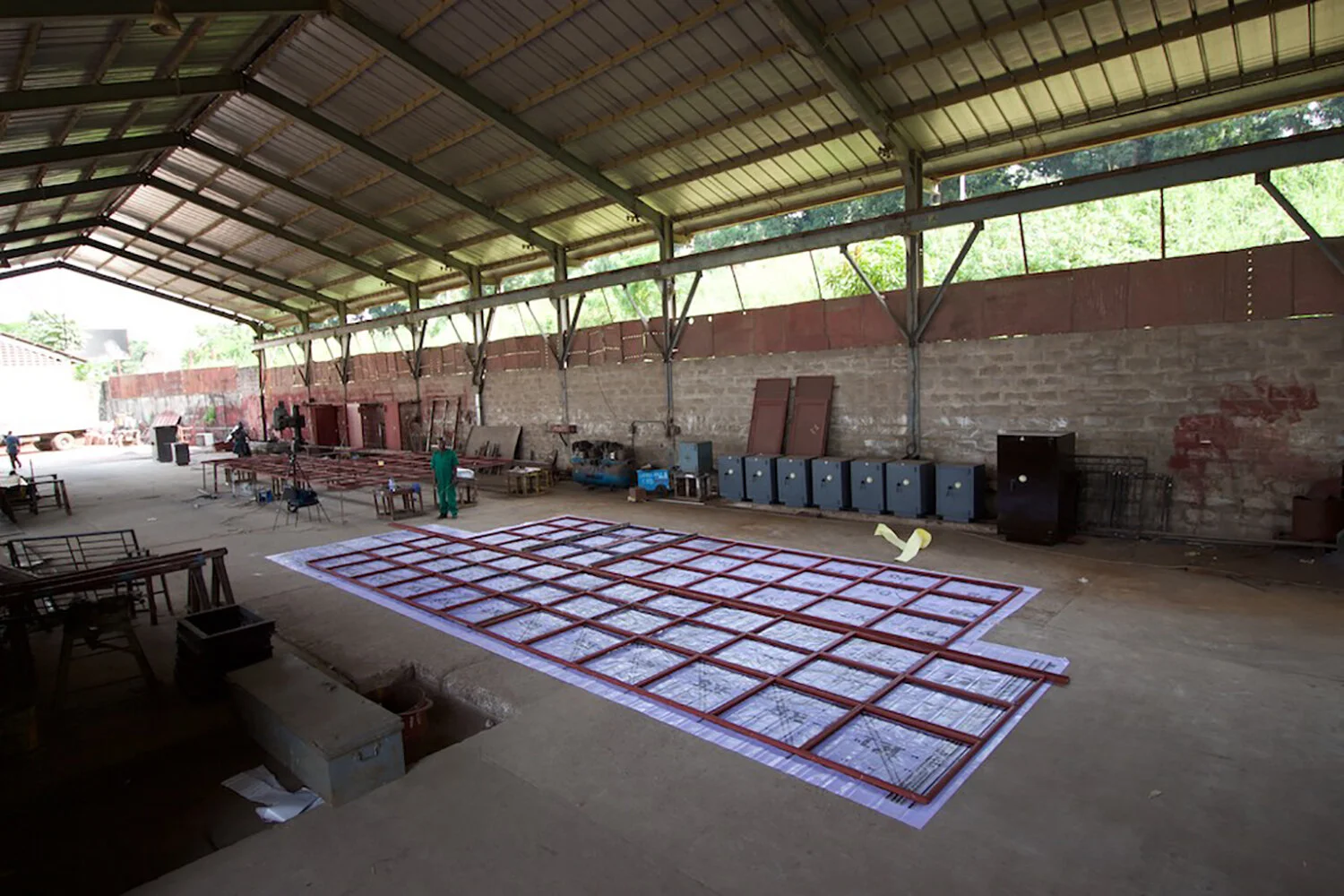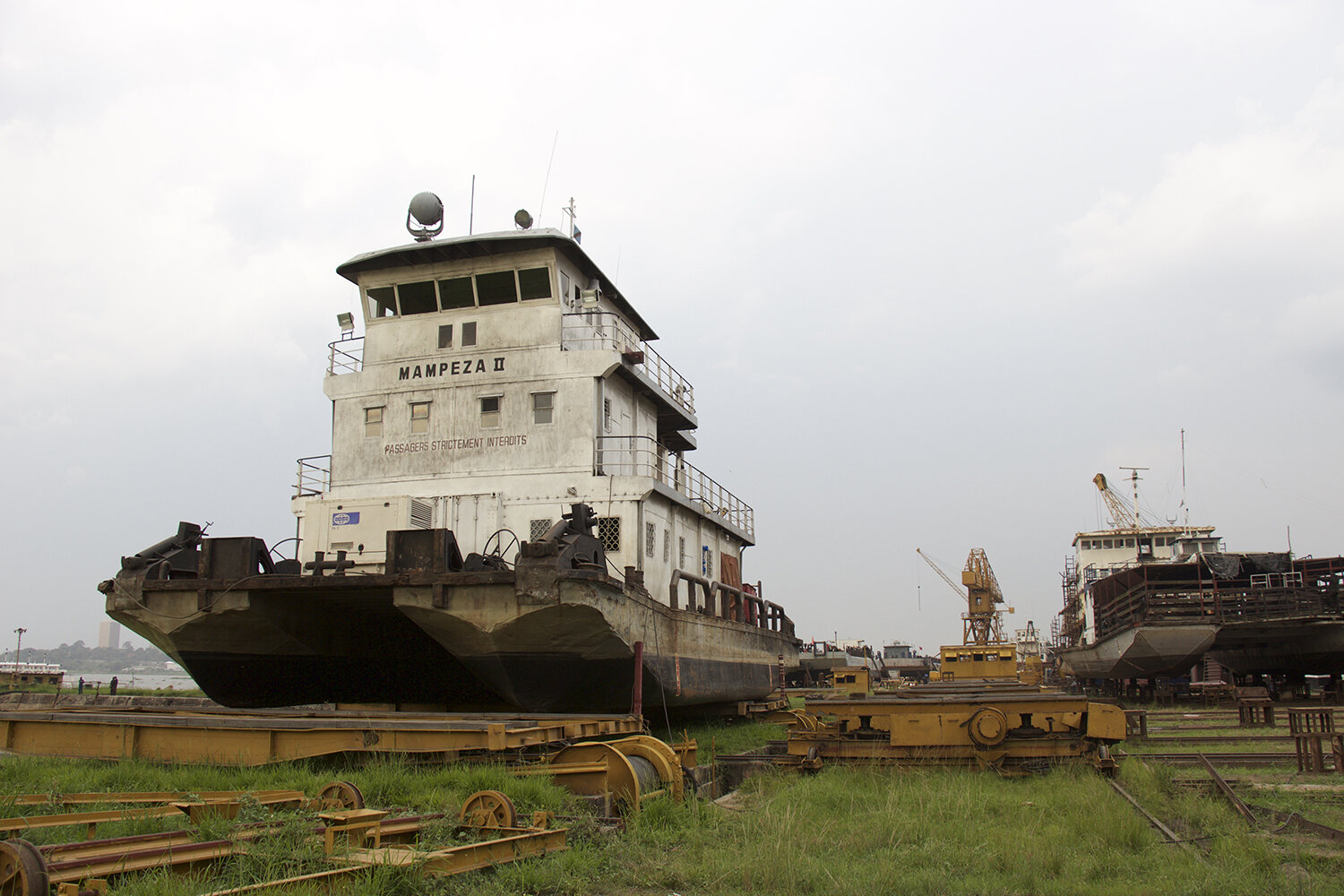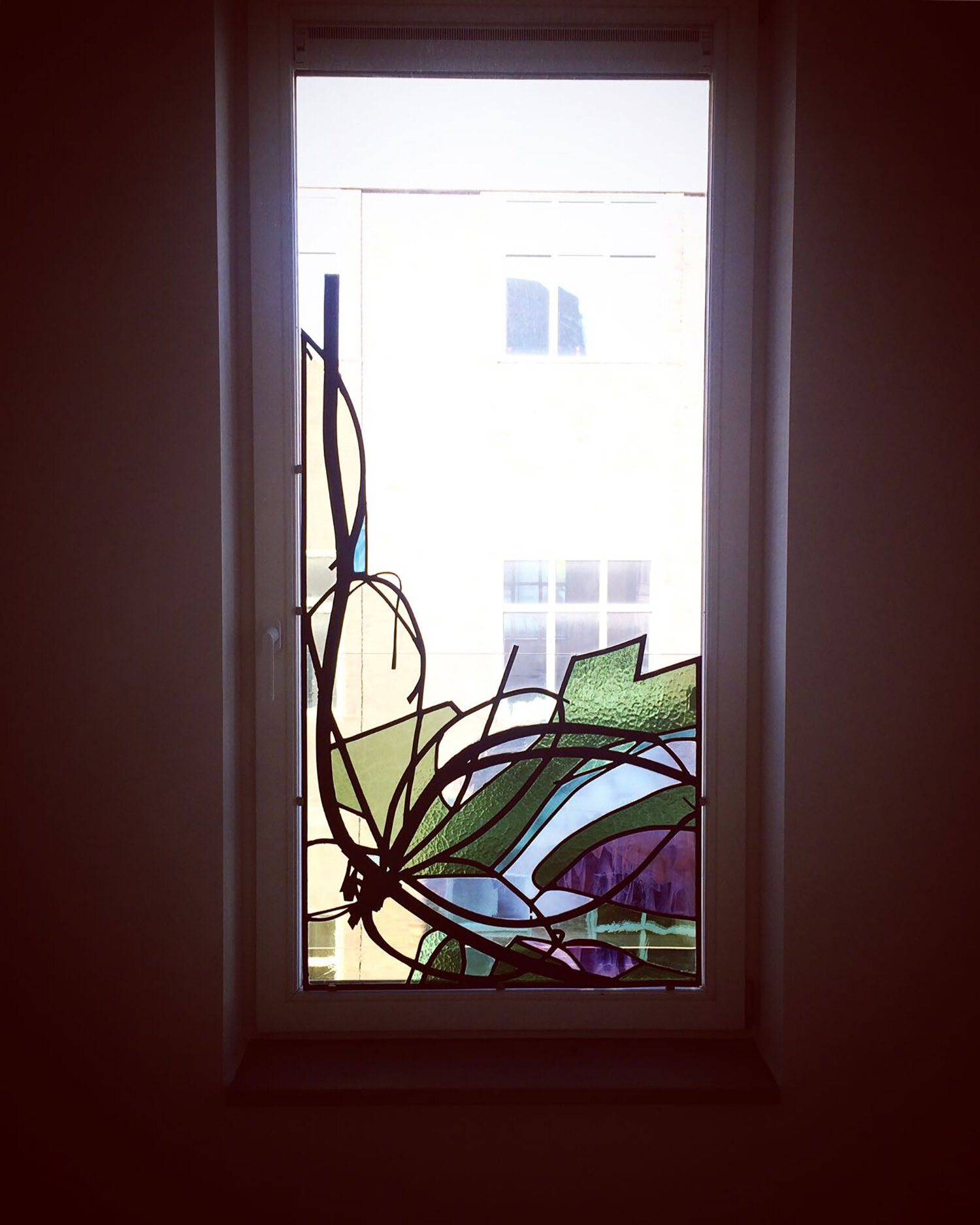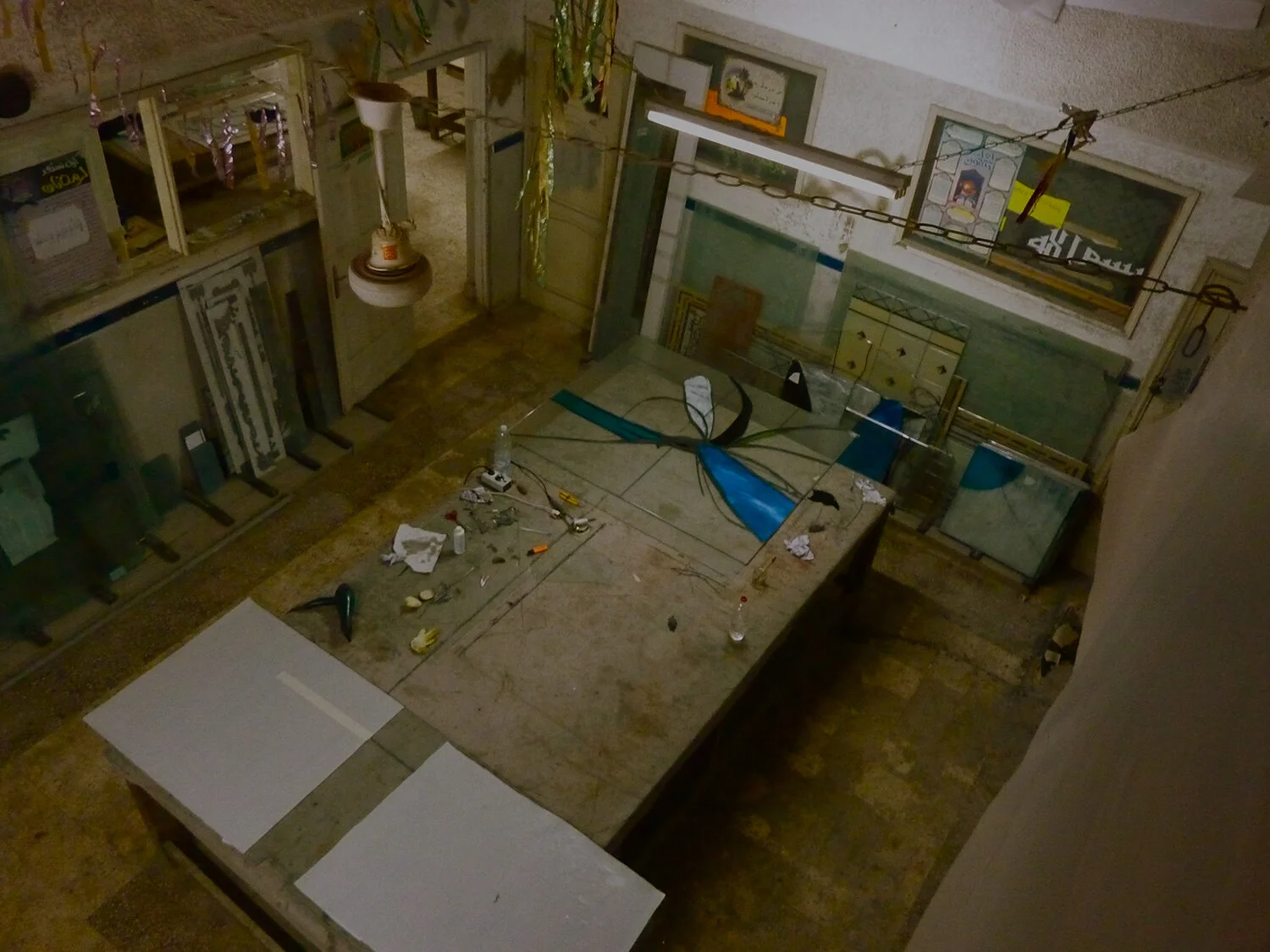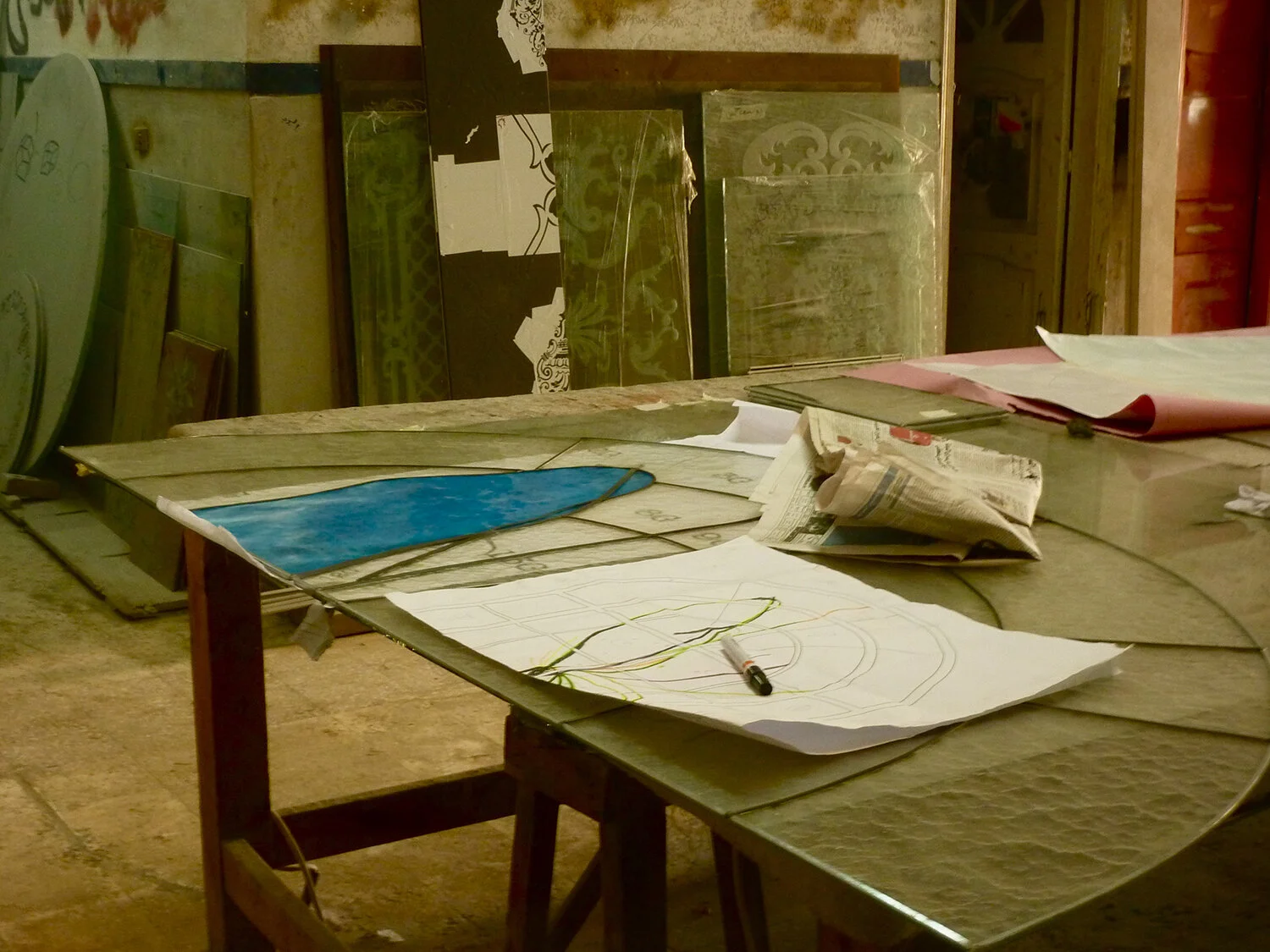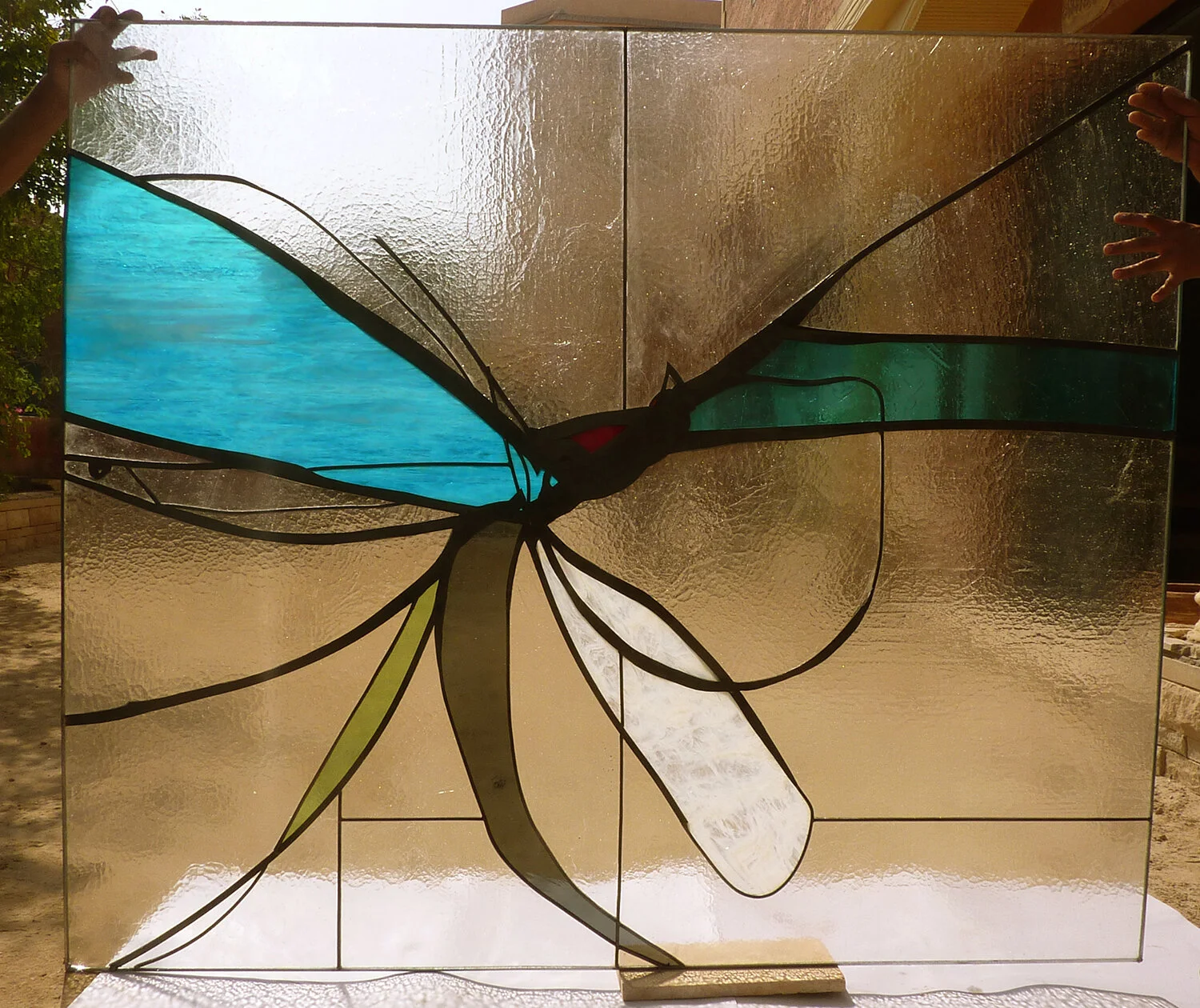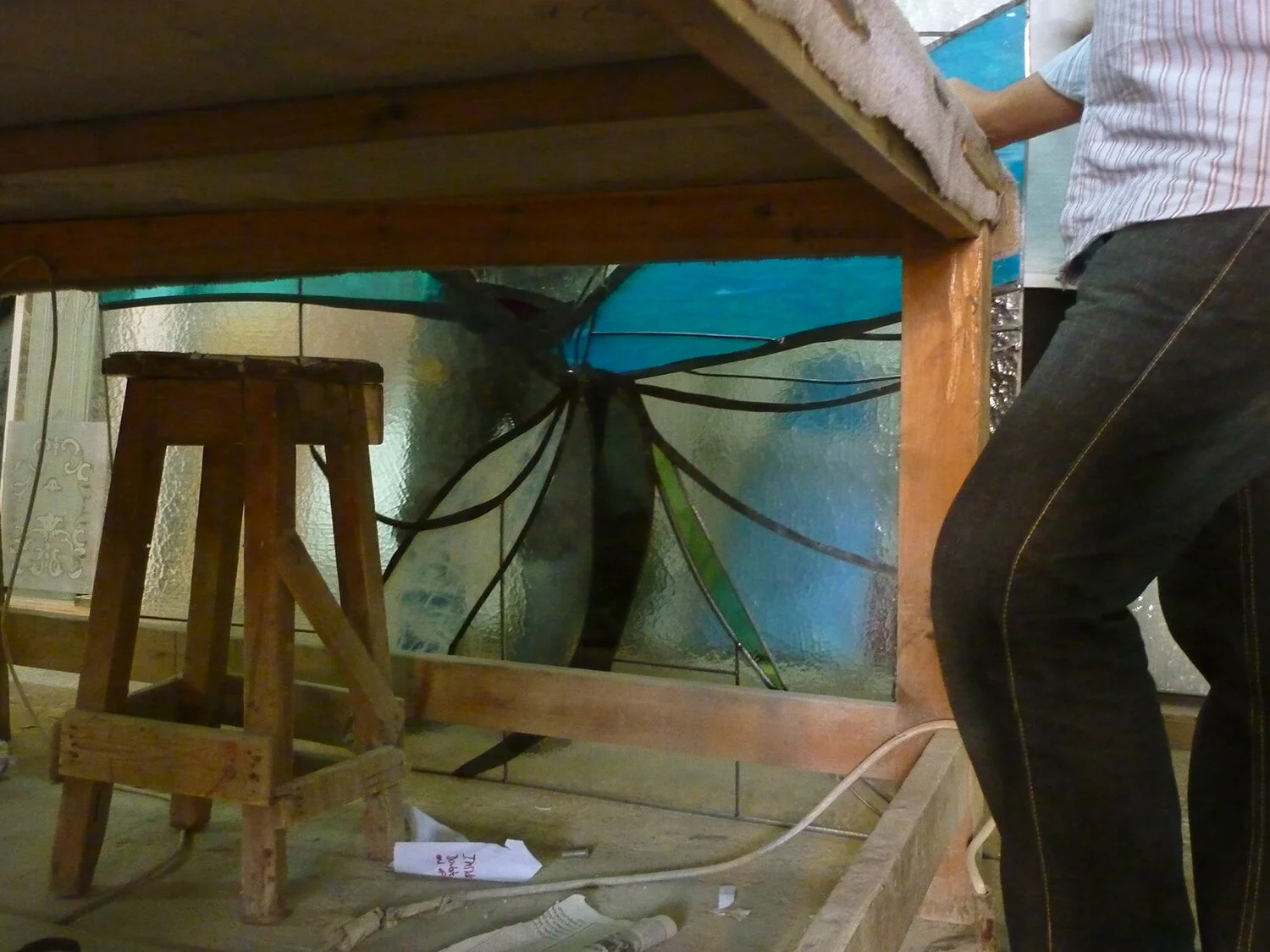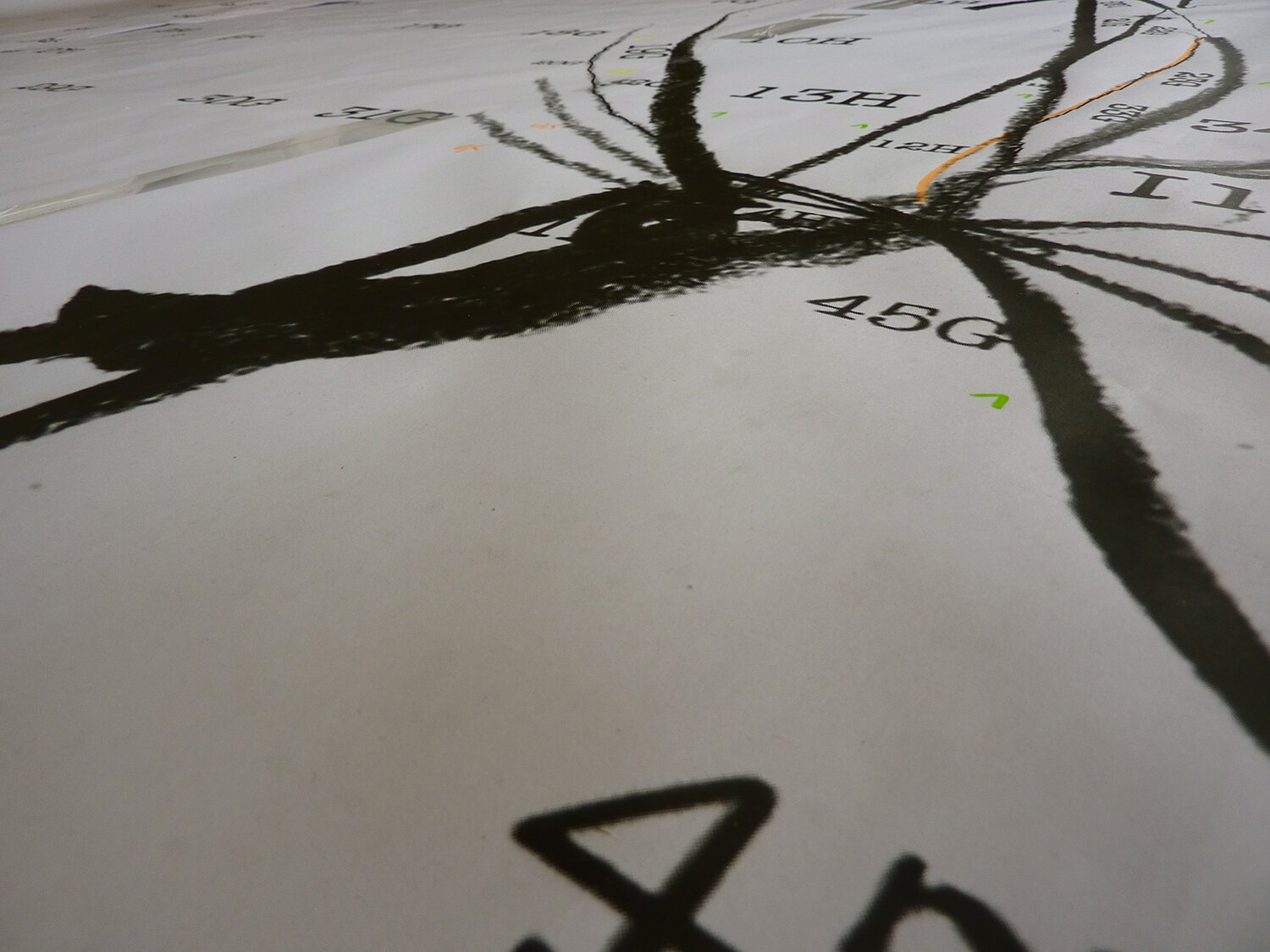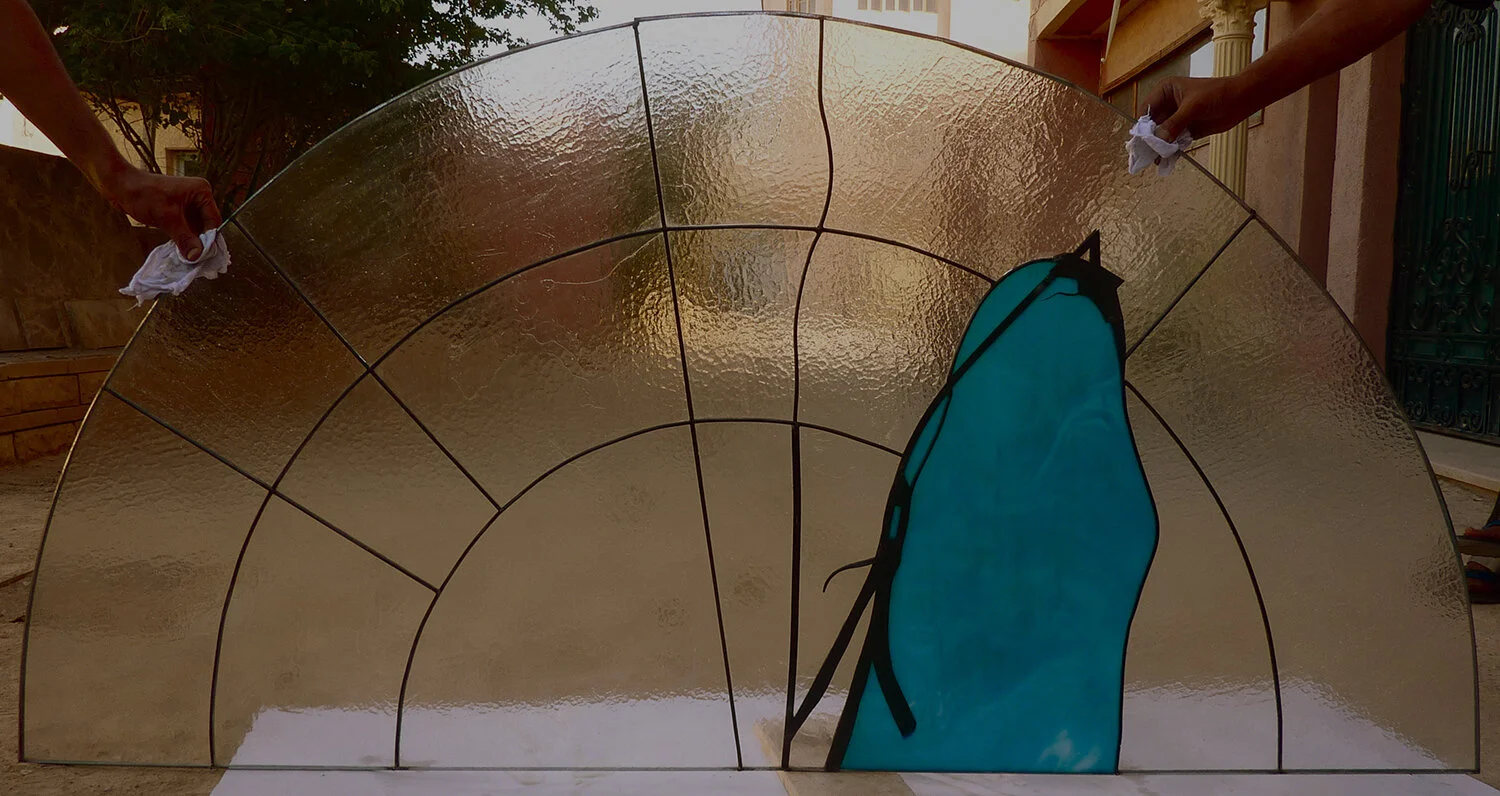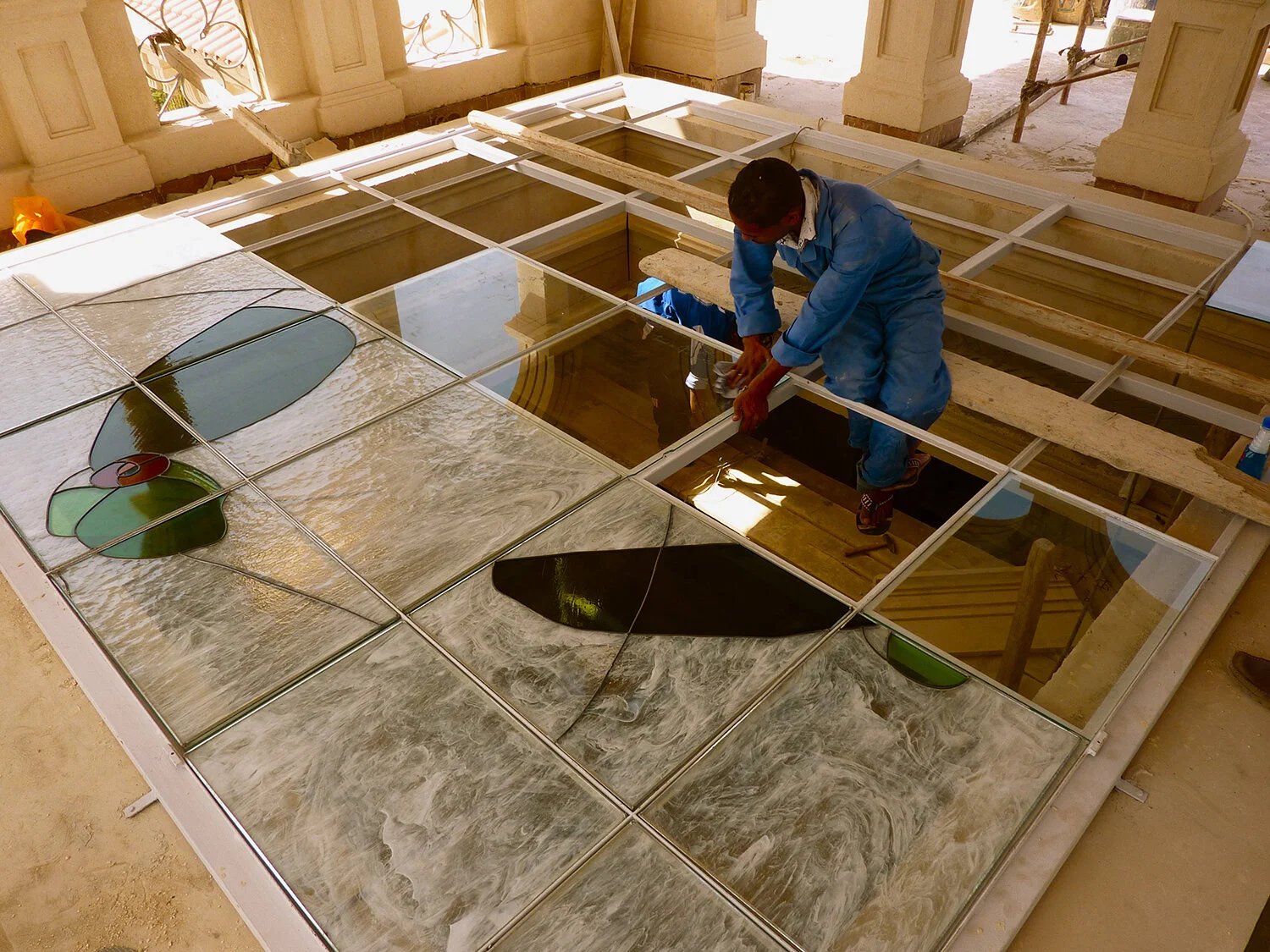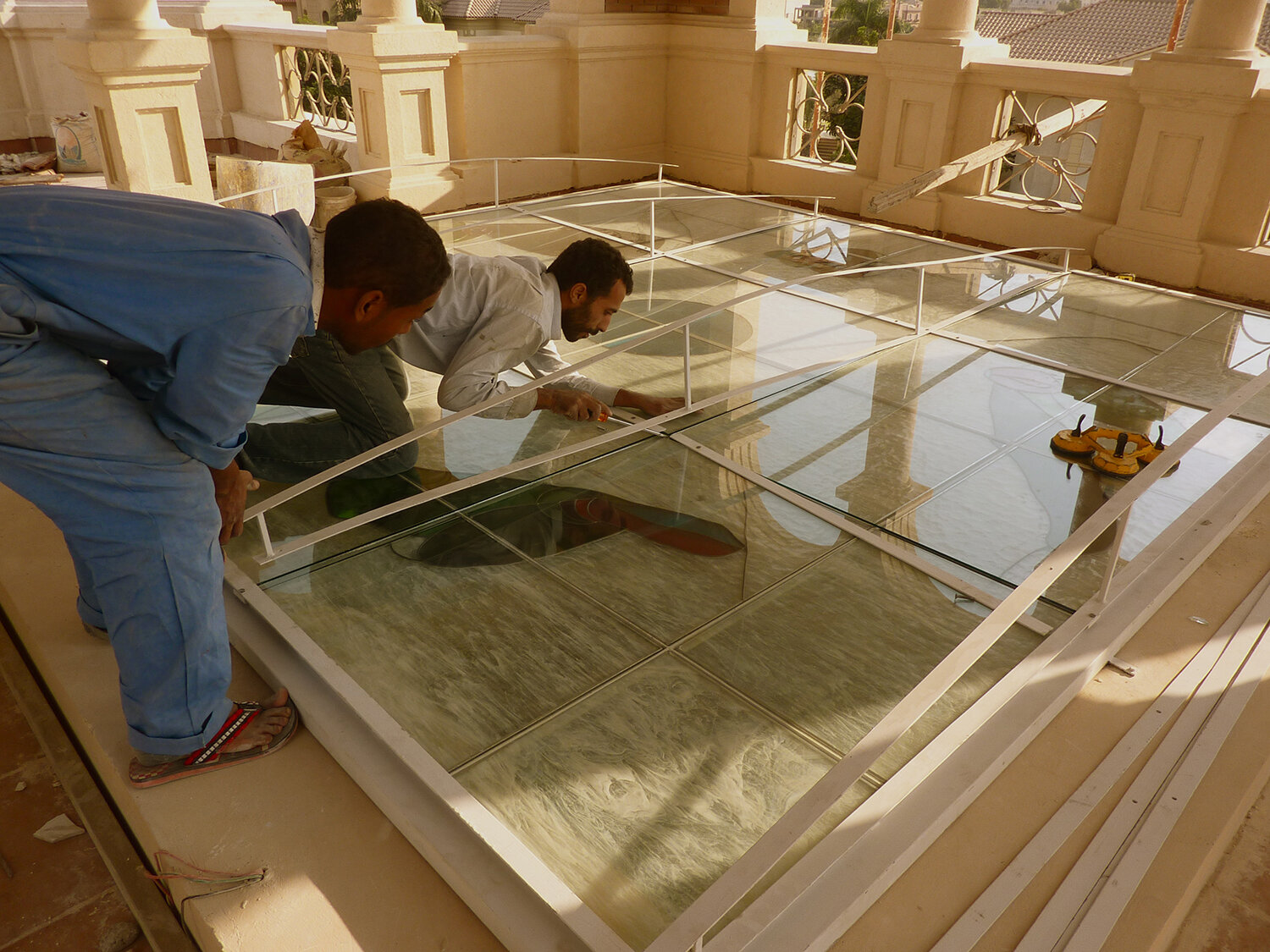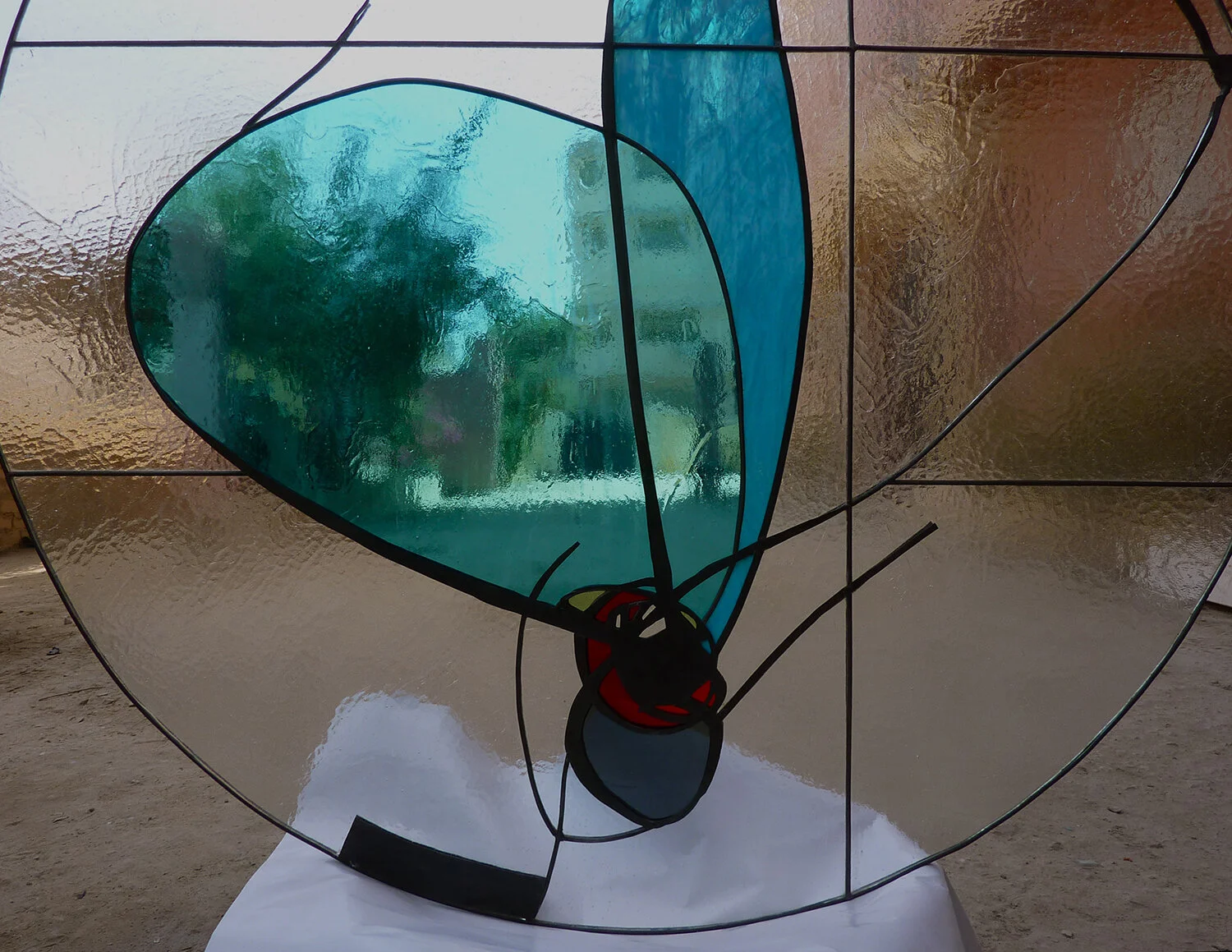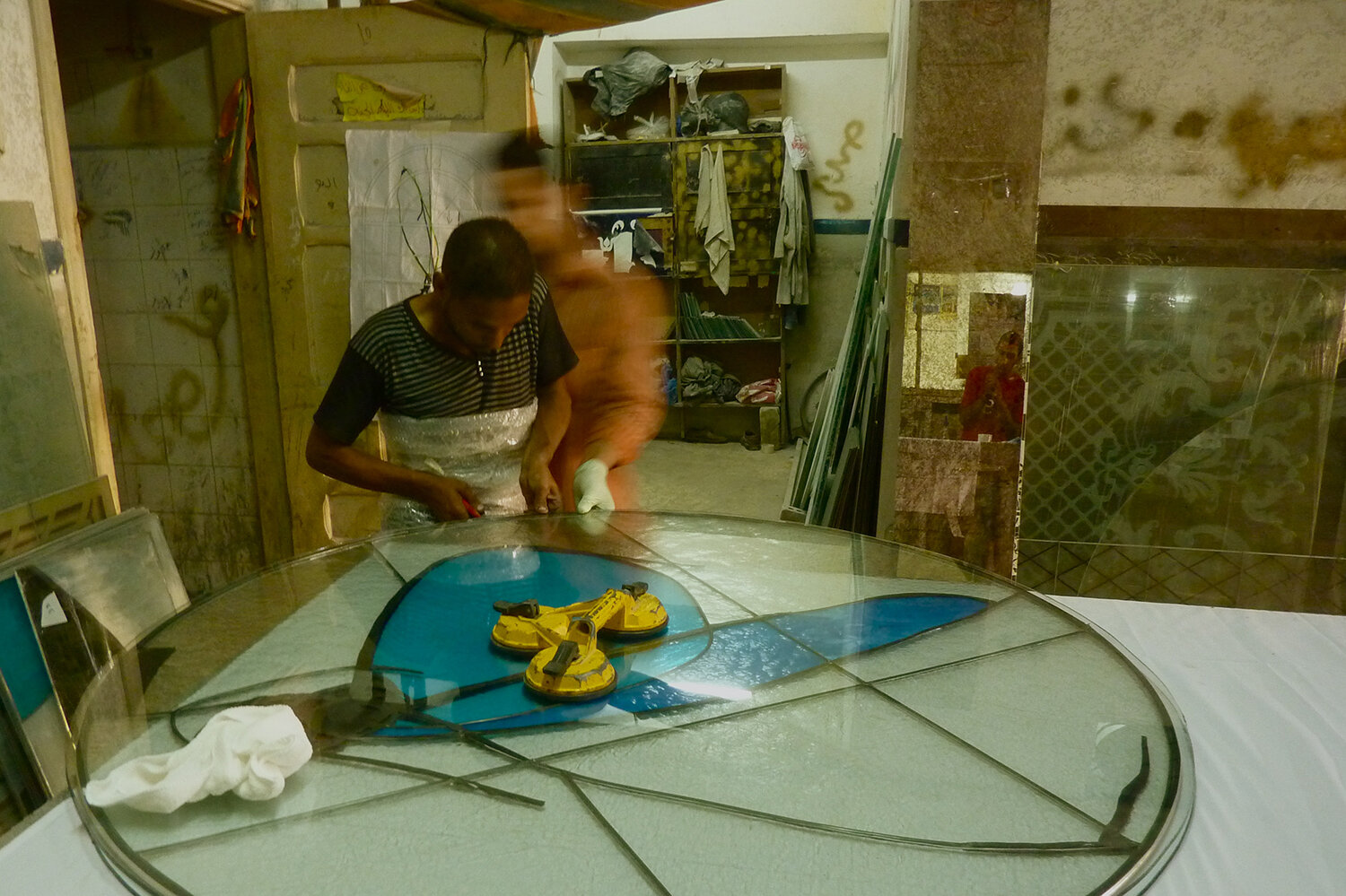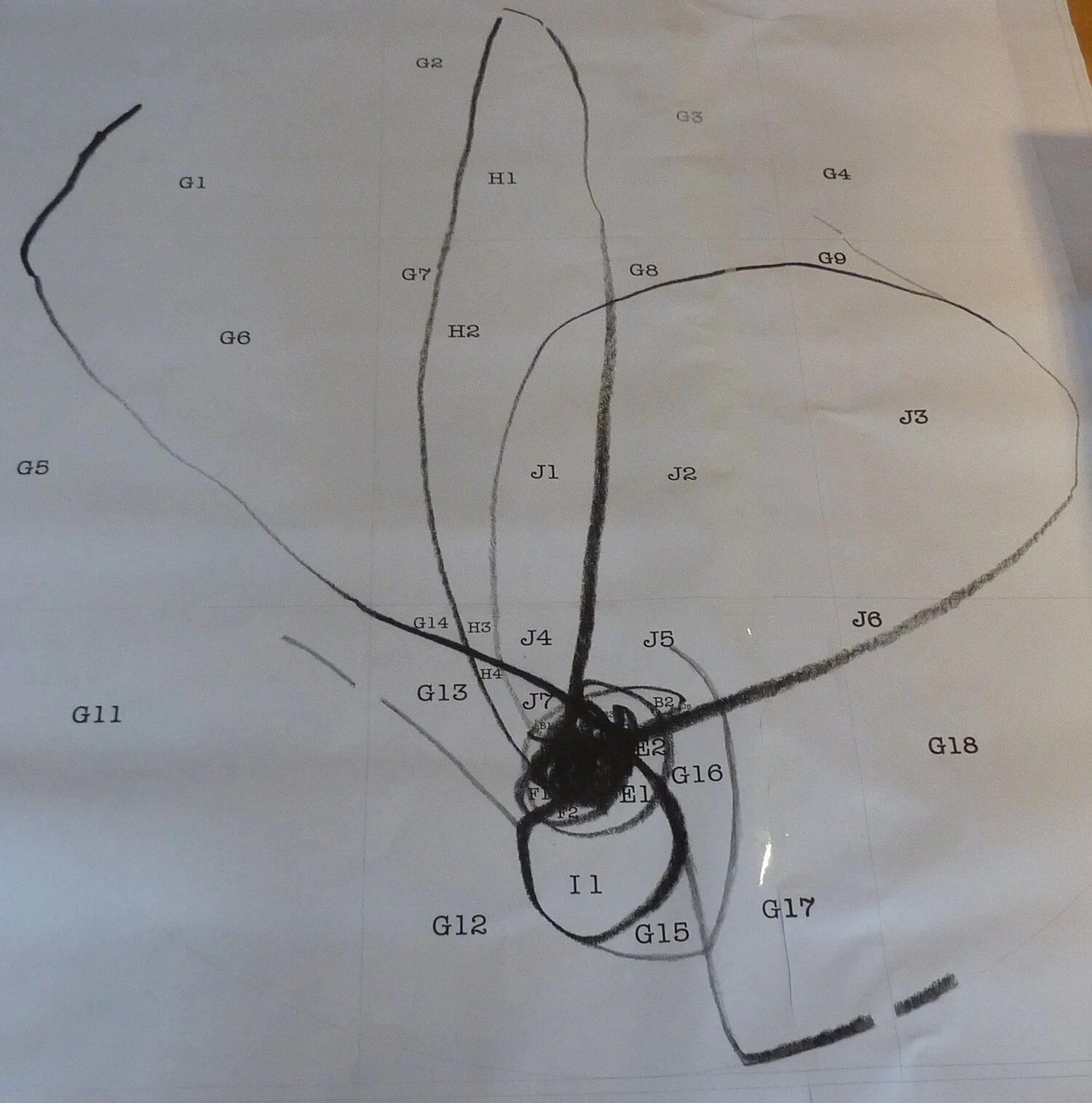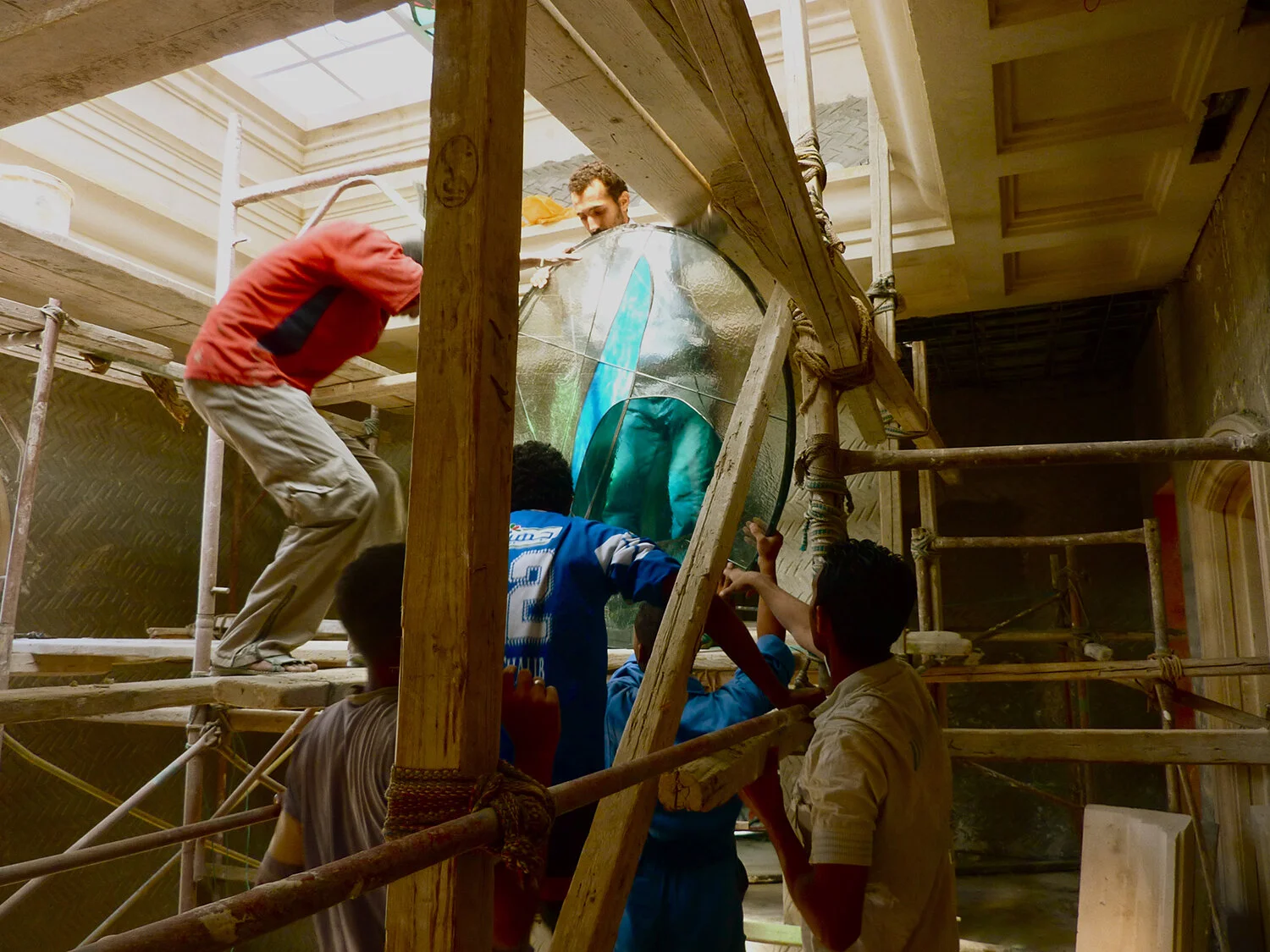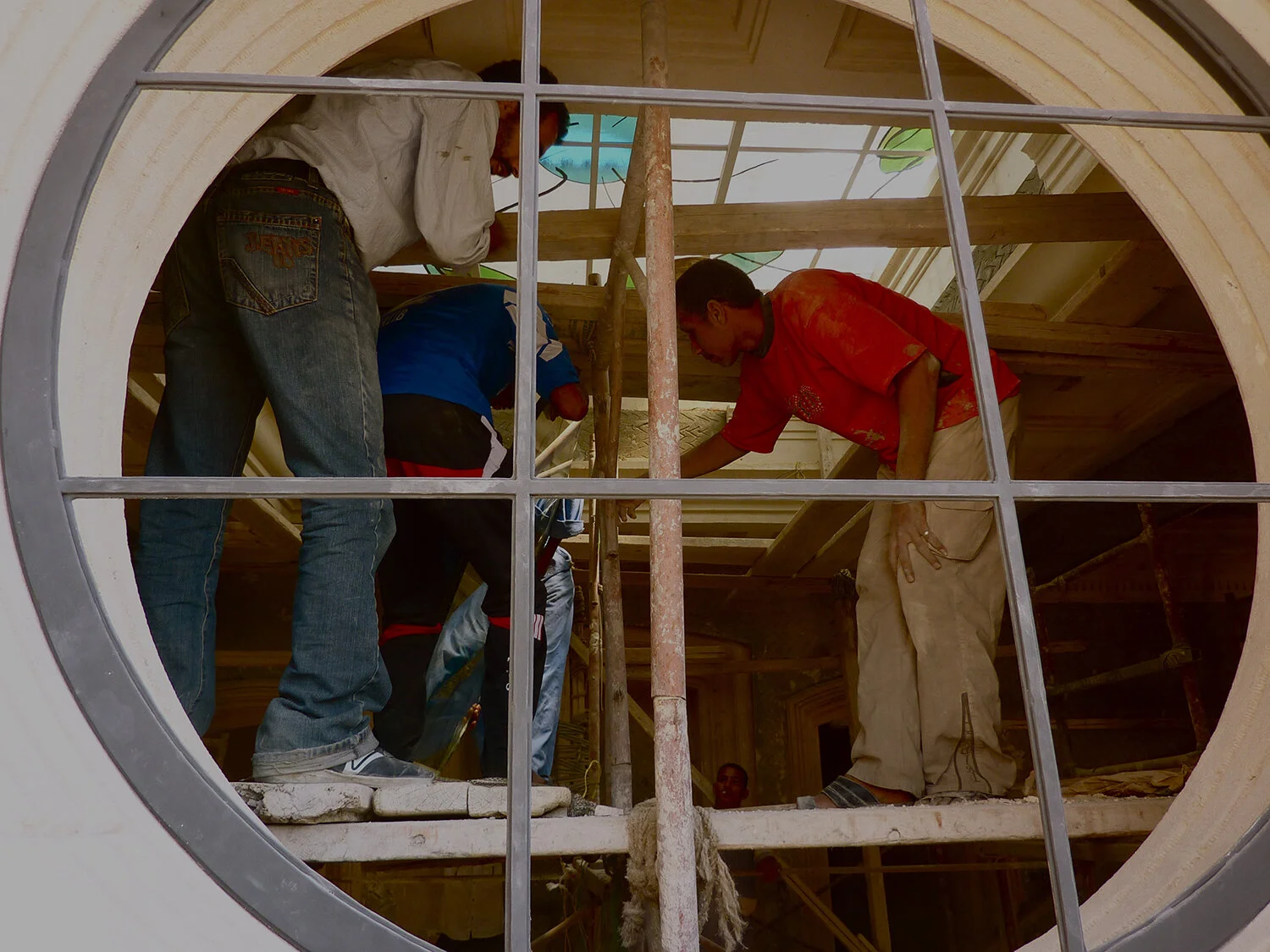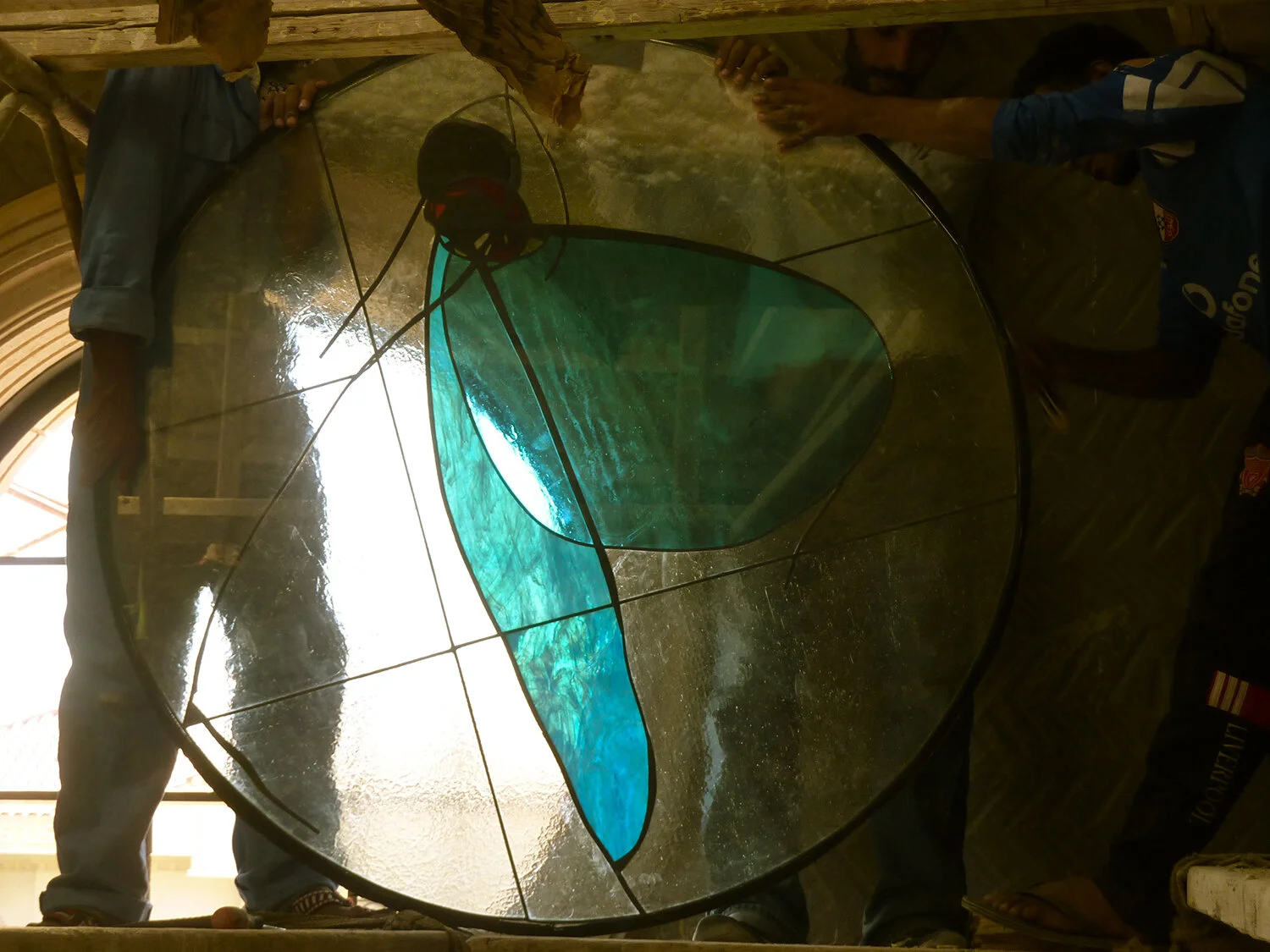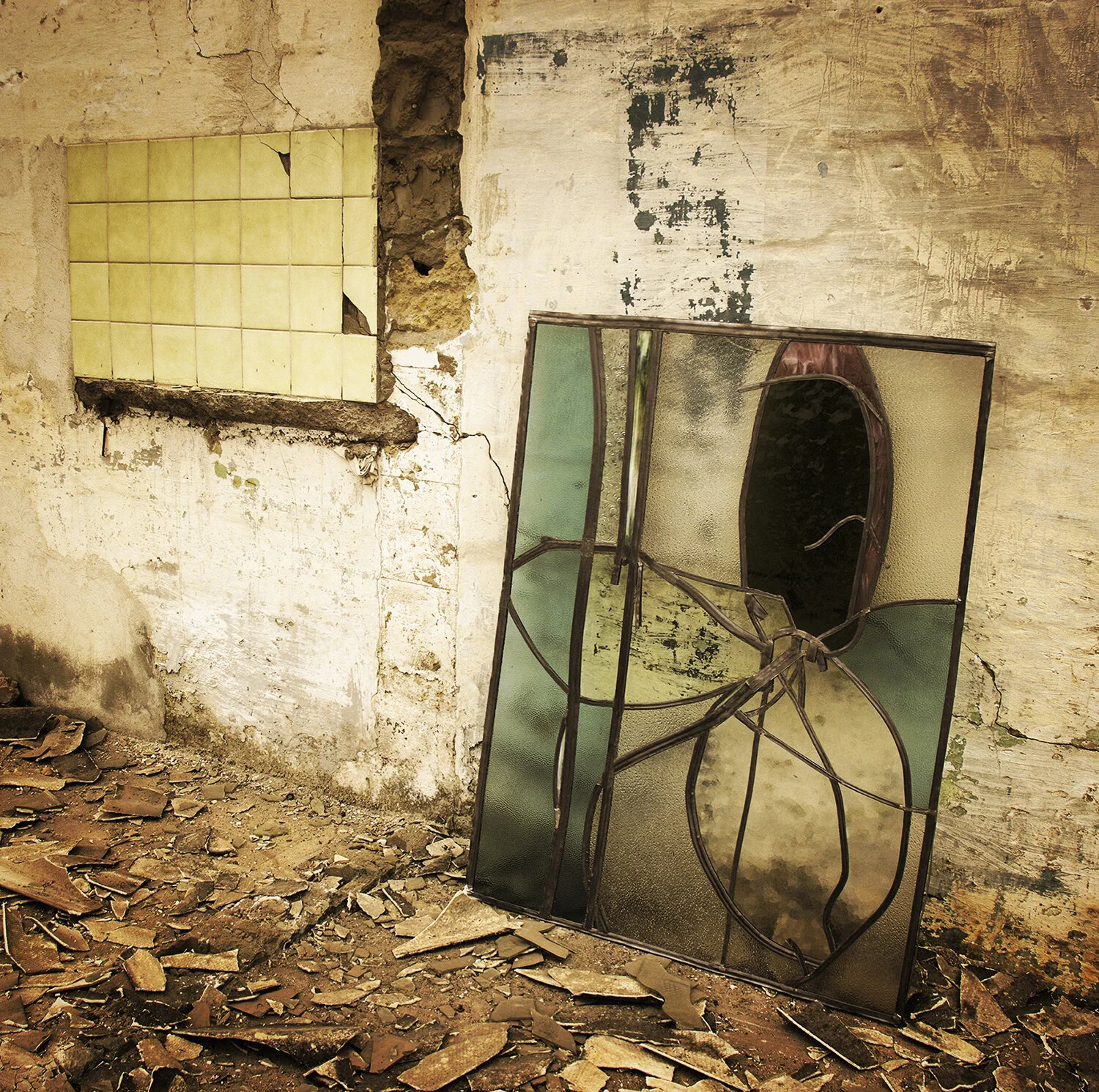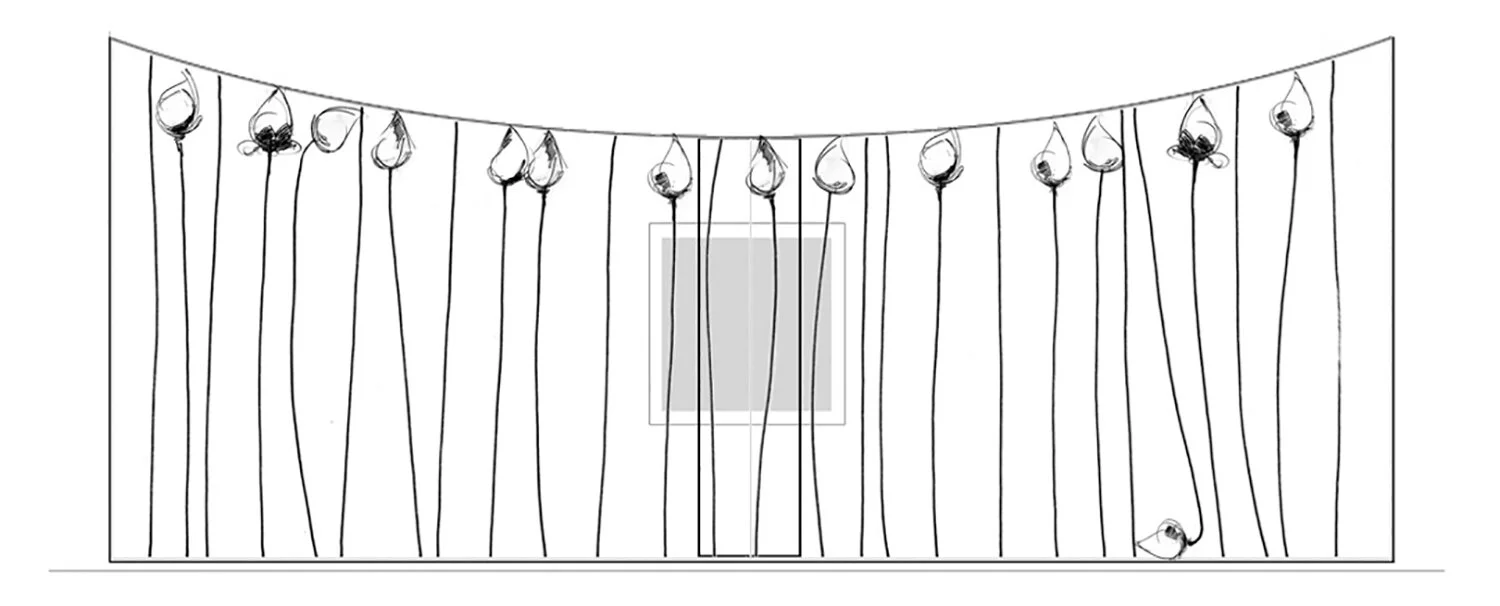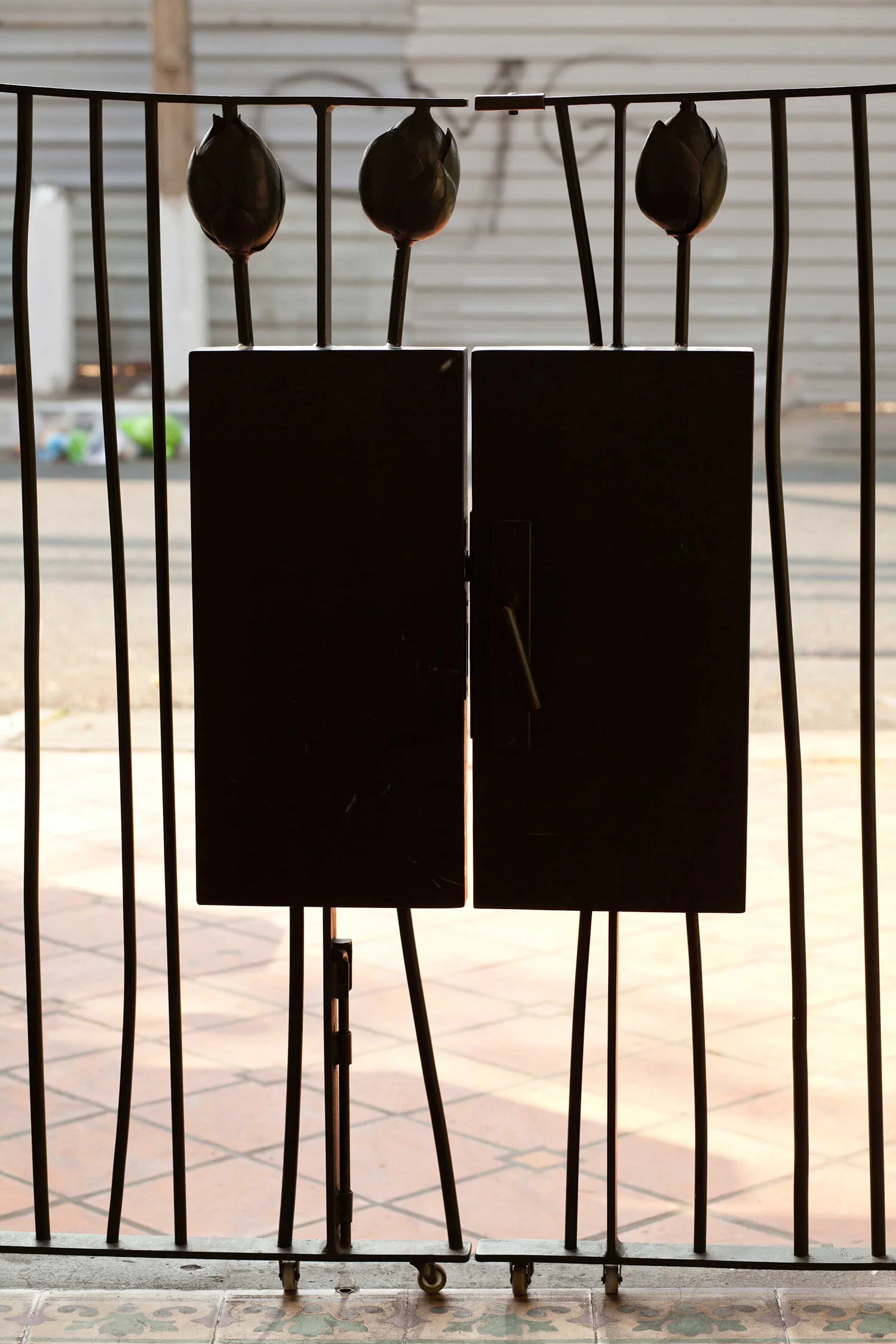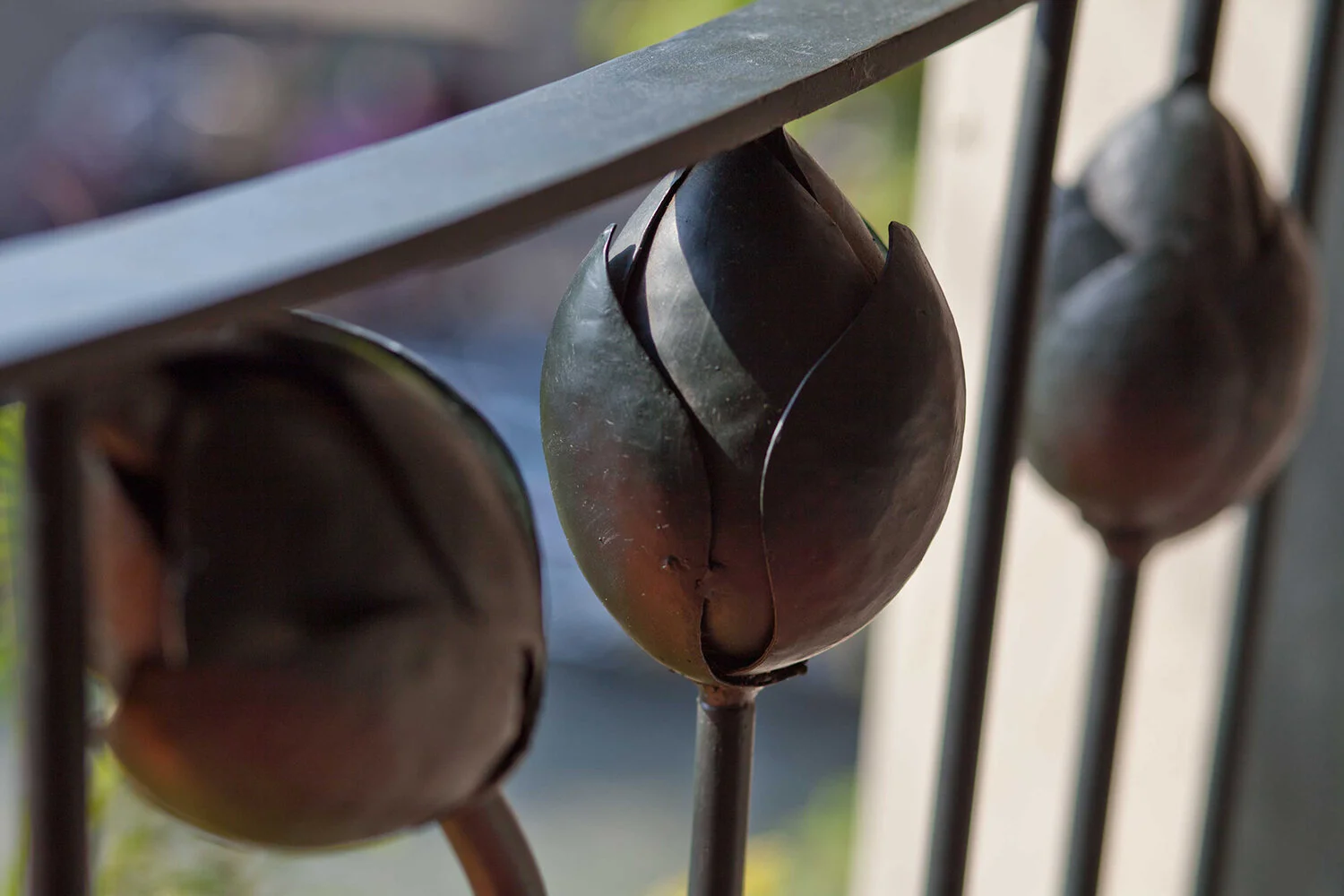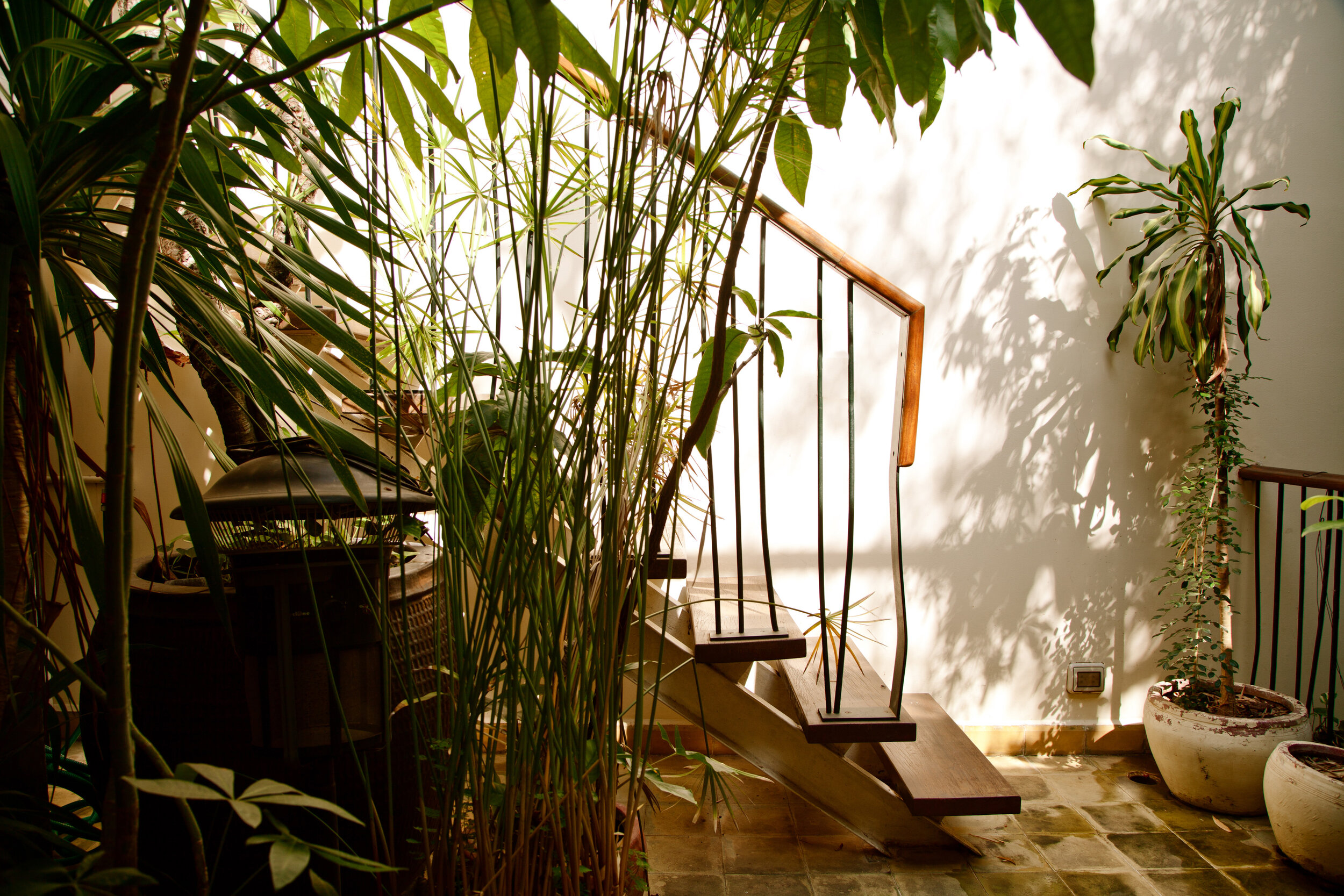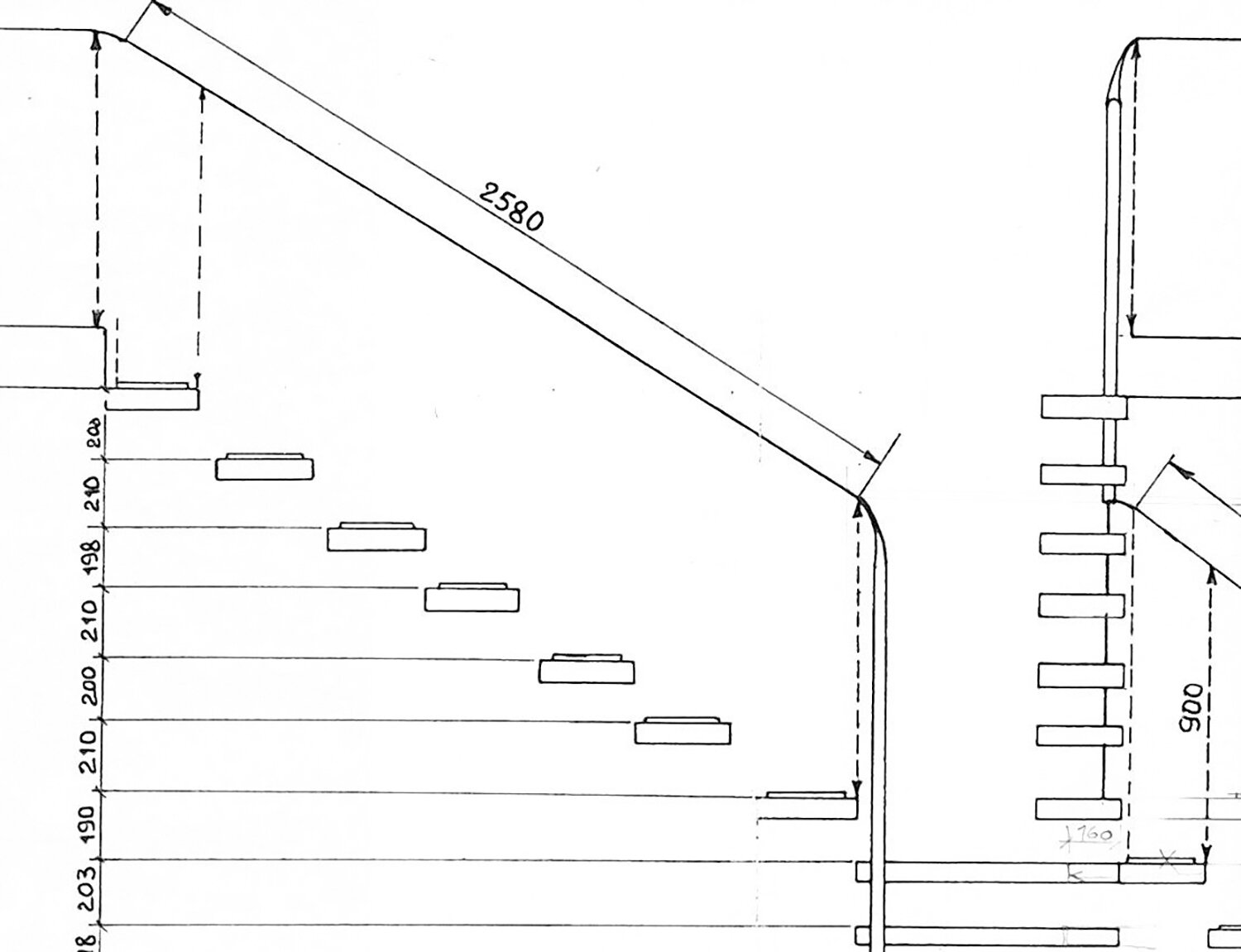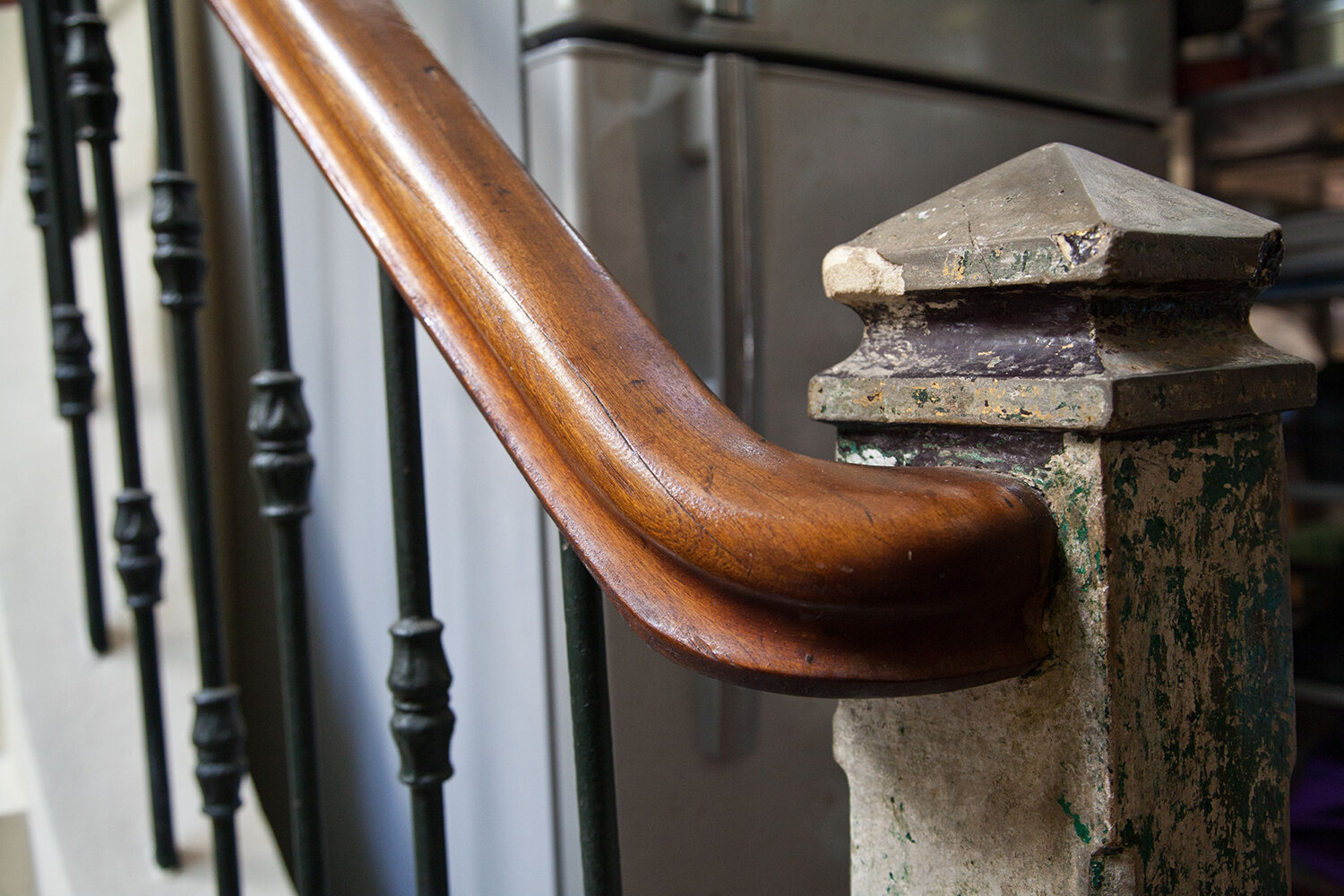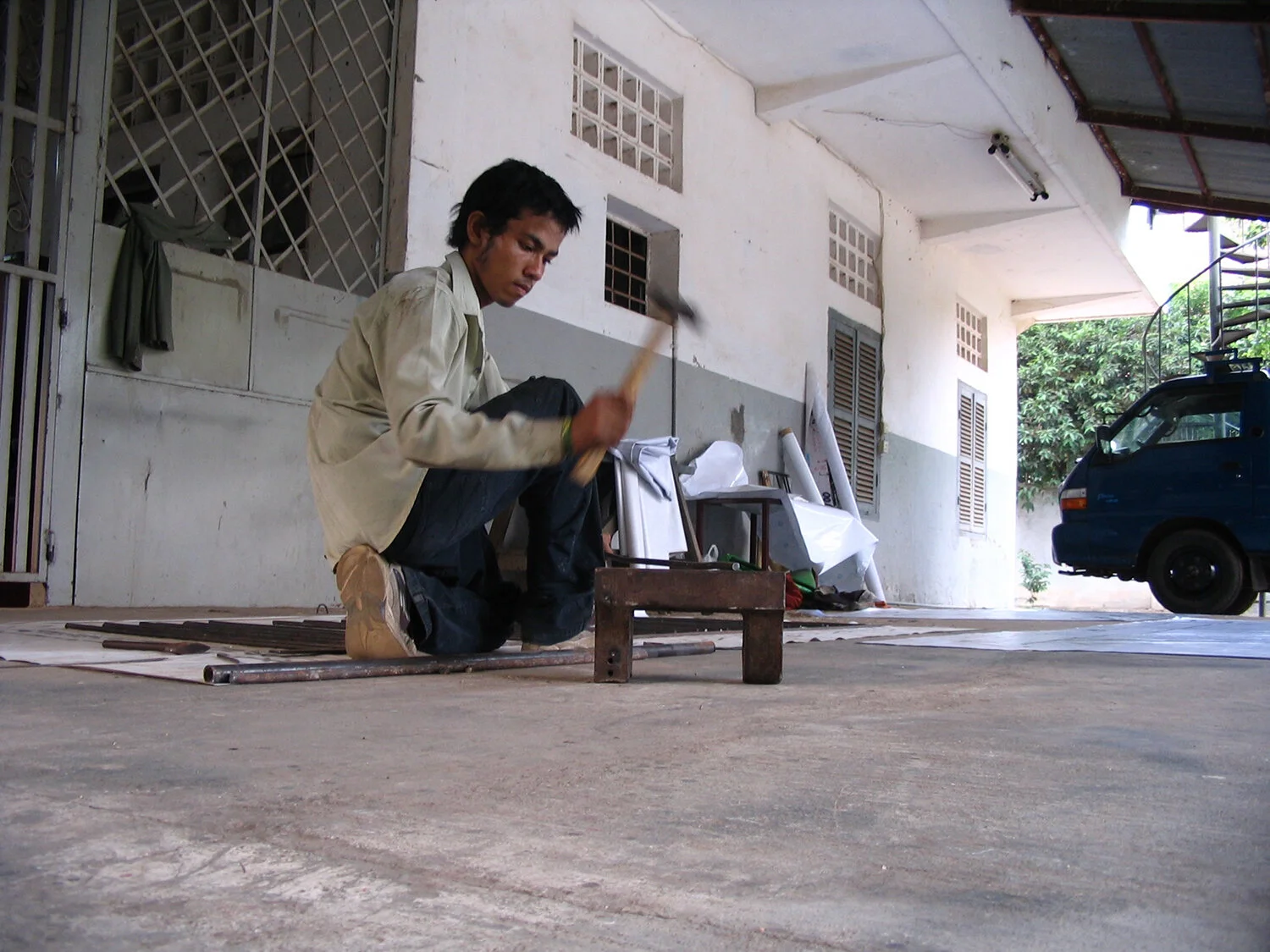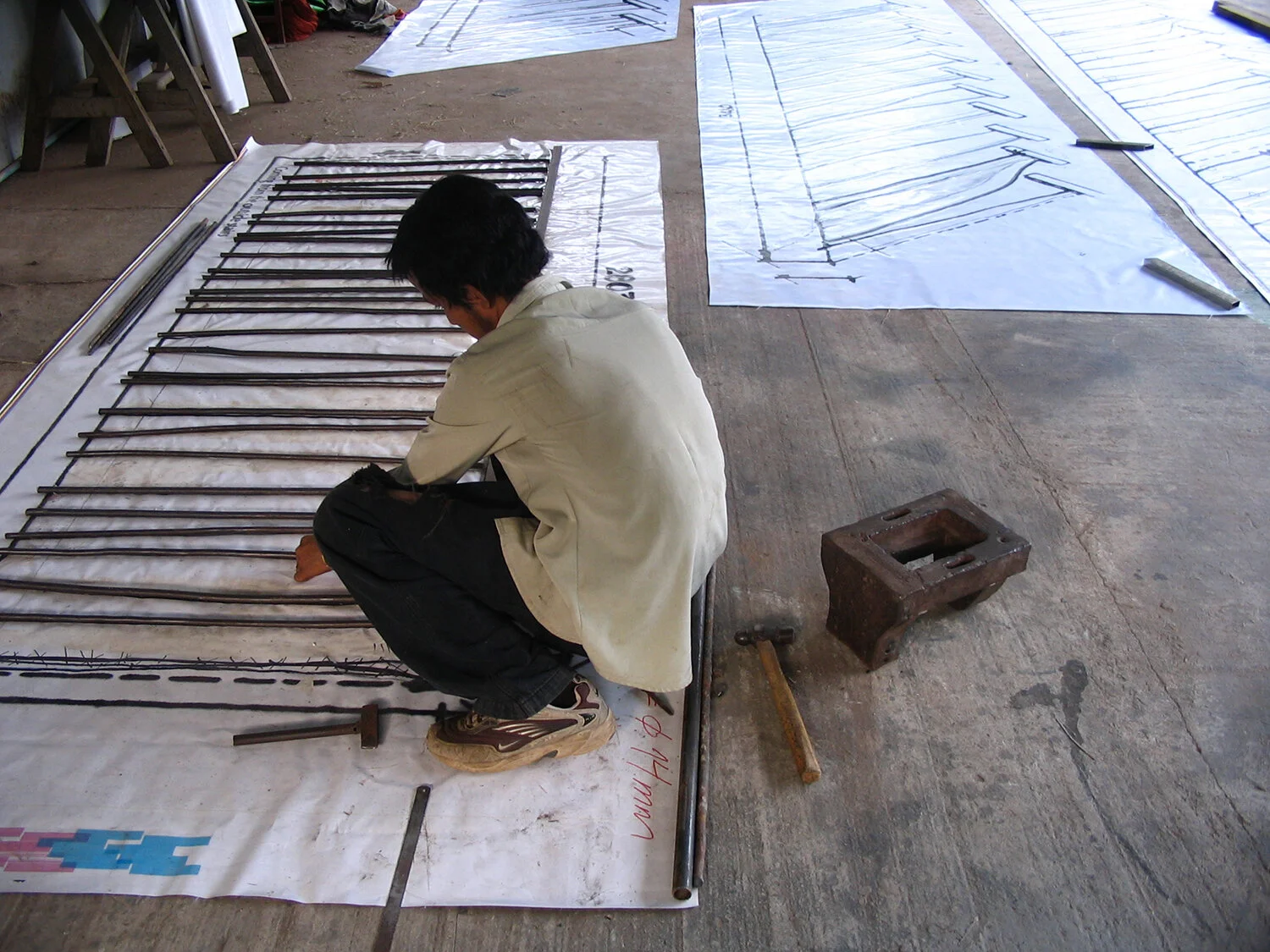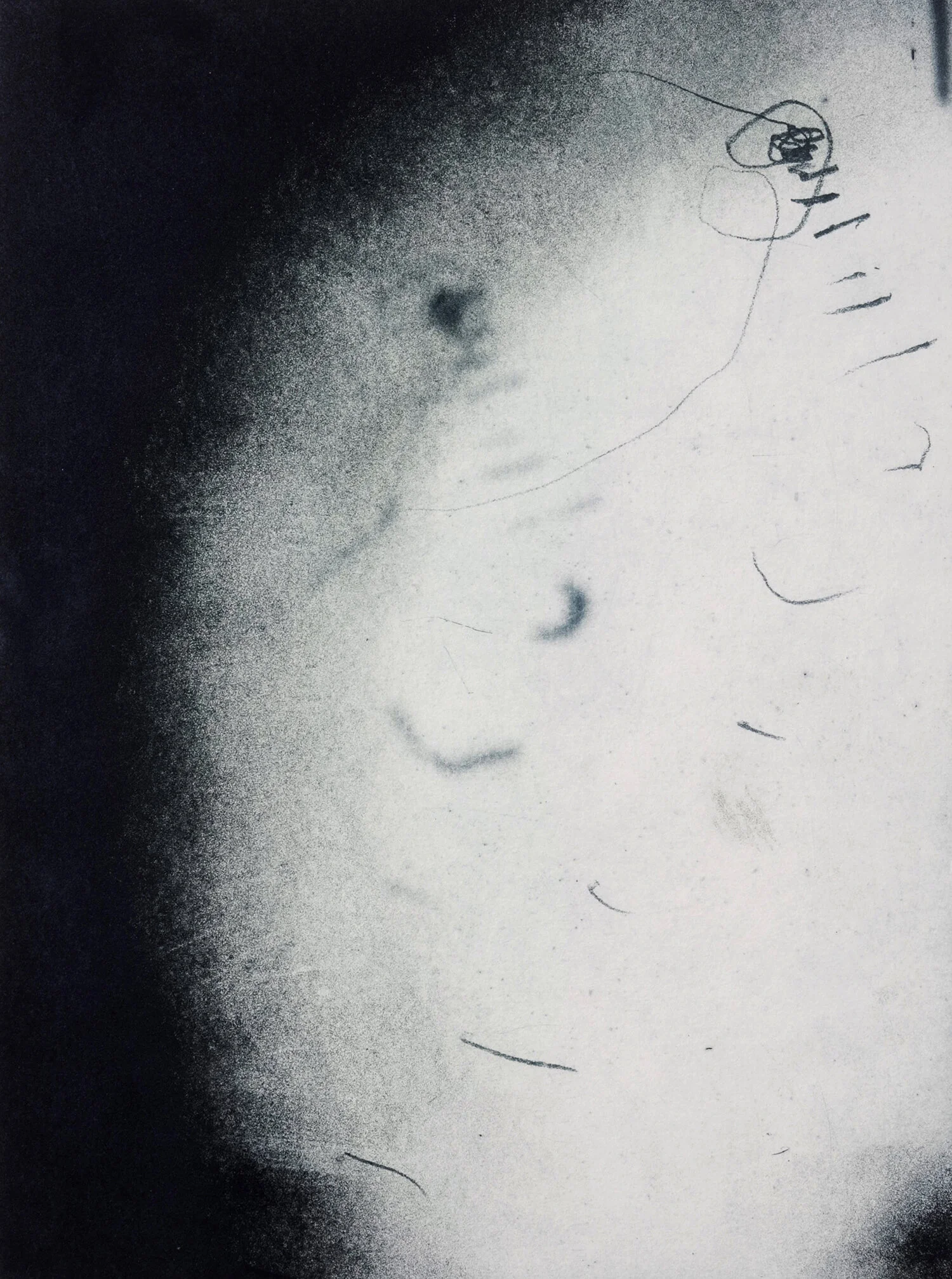Discursive Landscape (2024) is a design - not realised - for a stained-glass window, conceived for a residence by architect Berlage in Amsterdam. The installation consists of movable panels, acting as both an optical and conceptual bridge between interior and exterior space. It is not a passive boundary but an active mediator—a lens that not only transforms perception but also redefines the way meaning is assigned to the world beyond.
The composition plays with layers of transparency, colour, and abstract forms that oscillate between recognition and estrangement. The glass filters the light, fragmenting and reshaping the external environment into a shifting, ephemeral tableau—a landscape in flux. Pedestrians passing by, the silhouette of a windmill, drifting clouds, and the interplay of tree shadows are distilled into a layered impression where the boundaries between reality and reflection dissolve. Simultaneously, the glass is not merely a conduit for light but a material presence in its own right. It functions not only as a window but as a projection surface upon which light choreographs its own performance. As the sun moves across the sky, fields of colour spill onto floors and walls, transforming the space into a painting in motion.
This work aligns with Miwon Kwon’s discourse on site-specificity, in which place is not understood as a fixed, geographical entity but as an evolving relationship between materiality, context, and perception. Discursive Landscape is not merely an object embedded within architecture; it generates meaning through the dynamic interplay of light, space, and viewer. The work also resonates with Kazuo Saito’s concept of the ‘total landscape,’ which posits that no site exists in isolation but is instead part of broader ecological and urban systems. The stained-glass window does not simply alter the interior environment; it actively engages with the rhythms of the city and the shifting qualities of natural light that continuously redefine its presence.
The title Discursive Landscape reflects the idea that space is never neutral—it is always shaped through perception and interpretation. This stained-glass work invites a heightened awareness of seeing, in which the boundary between inside and outside is no longer fixed but becomes a fluid, ever-shifting dialogue.
Thus, the artwork is not merely a window onto the world but a world unto itself—a landscape that resists definition, continually reshaped in the interplay of light and gaze.
